How to Plan a Stunning Cut Flower Garden Layout
Dreaming of a gorgeous cut flower garden but unsure where to begin? In this post, I’ll guide you through every step of planning a cut flower garden layout, from choosing the best flowers to grow and caring for them so that you can enjoy a garden bursting with blooms.
Whenever I start planning my cut flower garden, I think about how much joy it brings me to have fresh, vibrant blooms outside my door. There’s nothing quite like walking through the garden with a basket and snipping flowers for arrangements—it’s my happy place!
For me, it all starts with a clear plan for growing cut flowers. A plan that’s not just about creating a beautiful space; it’s also about designing a layout that keeps your garden productive from spring to fall.
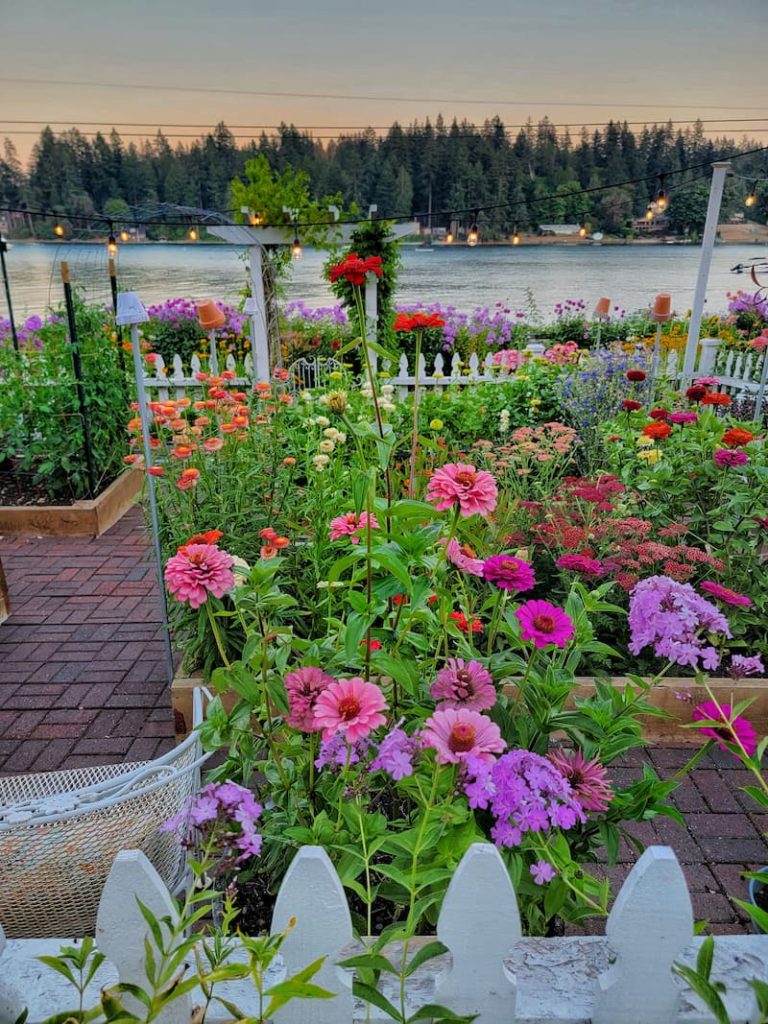
I can’t tell you how much I love planning my cut flower garden layout each year.
My garden is never the same from year to year. I’m always experimenting with growing new flowers, and I’m not afraid to say goodbye to any plant that didn’t fit in!
As an Amazon affiliate, I earn a commission from qualifying purchases at no additional cost to you. My blog also features other affiliate links for your convenience. Click here to read my privacy policy.
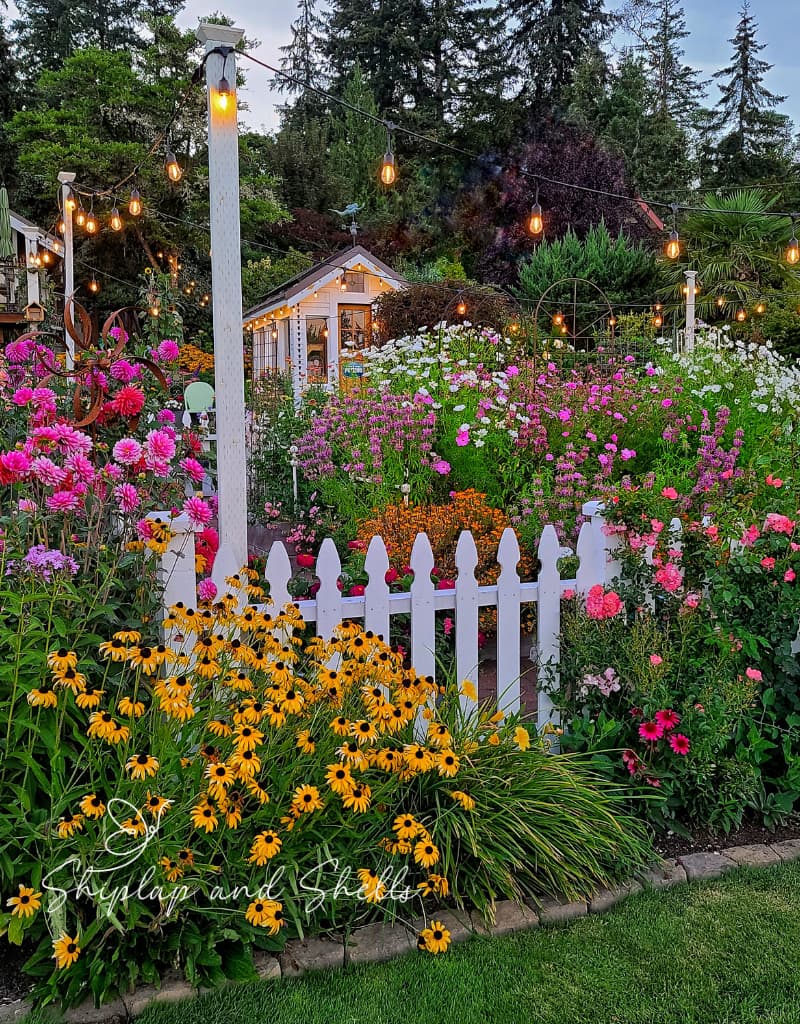
The planning phase is so important for gardening efficiency and your sanity! Trust me, your results will be much more positive if you invest more time in designing and planning your gardening space from the beginning.
Seed Starting Supplies
Check out my favorite supplies and tools for starting seeds indoors. Whether you’re looking for grow lights or a seed starting mix, you’ll find what I use in my own greenhouse.
How Do You Plan a Cut Flower Garden?
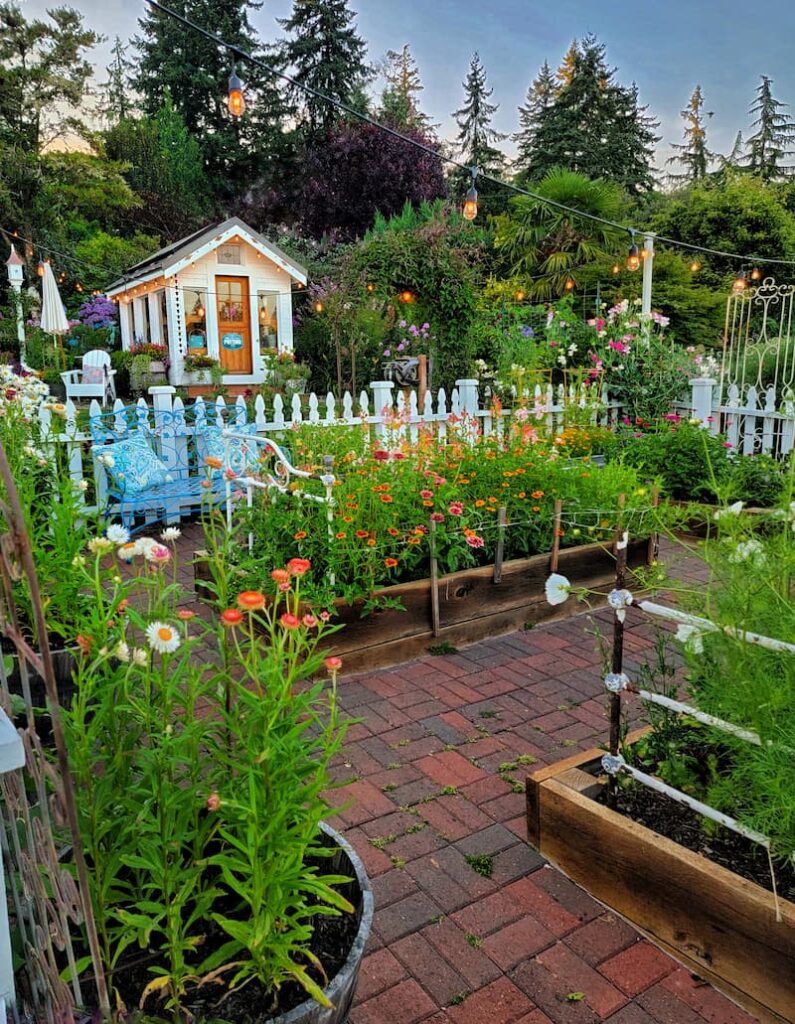
In this blog post, I’ll share five essential elements that will guarantee the success of your cut flower garden.
Choosing the ideal location for your annual cut flowers and the strategy behind deciding where to plant your seed starts is a great head start to your gardening dream.
Next, I’ll guide you through calculating the necessary space for your flower seeds and designing a layout that’s visually pleasing, practical, and easy to maintain.
And, of course, I’ll help you to make informed decisions about what flower seeds to order for your garden.
Steps to Planning a Cut Flower Garden
1. Choose a Location for Your Annual Cut Flowers
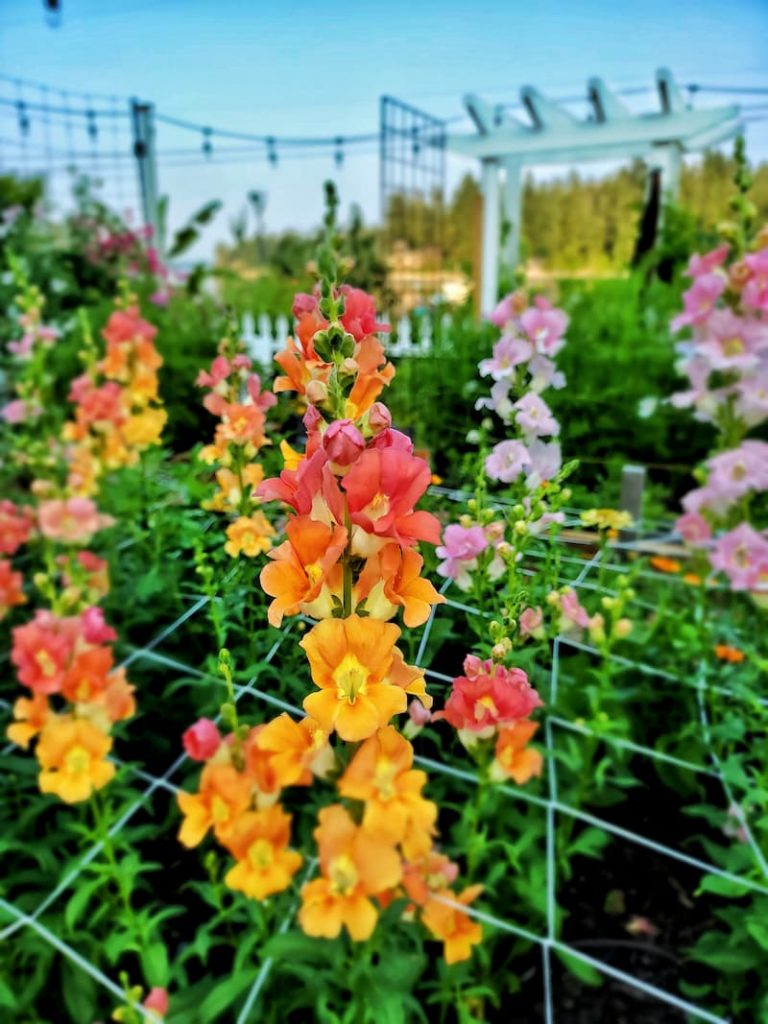
The sunlight, soil, and space needed to grow a fresh-cut garden must be evaluated before planning the layout of your cut flower garden.
Evaluate Garden Beds for the Amount of Sunlight Available
When planning a garden bed, choose plants that require similar amounts of light, with some variety for interest.
Evaluate your garden beds for sunlight availability to create a thriving cut flower garden. Most flowers I grow in the cutting garden need at least 6 hours of sun daily.
Avoid overcrowding, which can cause competition among plants for resources like water and nutrients.
Choose an Area With Healthy Soil
When planning the location of your cutting garden, you’ll want to ensure you have good garden soil. Choose an area with well-drained, healthy soil free from large root systems.
I highly recommend you perform a soil test before planting your seed starts. This will give you a better understanding of how your soil will perform and what amendments will need to be added to the ground.
There are soil test options available. You can buy an inexpensive test or hire a local garden resource center to test your soil conditions.
SHOP SOIL TESTS AND MONITORS HERE
Many beginning gardeners pass on this step but usually never make the same mistake twice. It is such an important part of the process.
Your flowering garden will thrive when you add organic matter. I add fish compost to my garden beds every April and mulched leaves every fall to add nutrients to the soil.
2. Decide Where to Plant Your Seed Starts
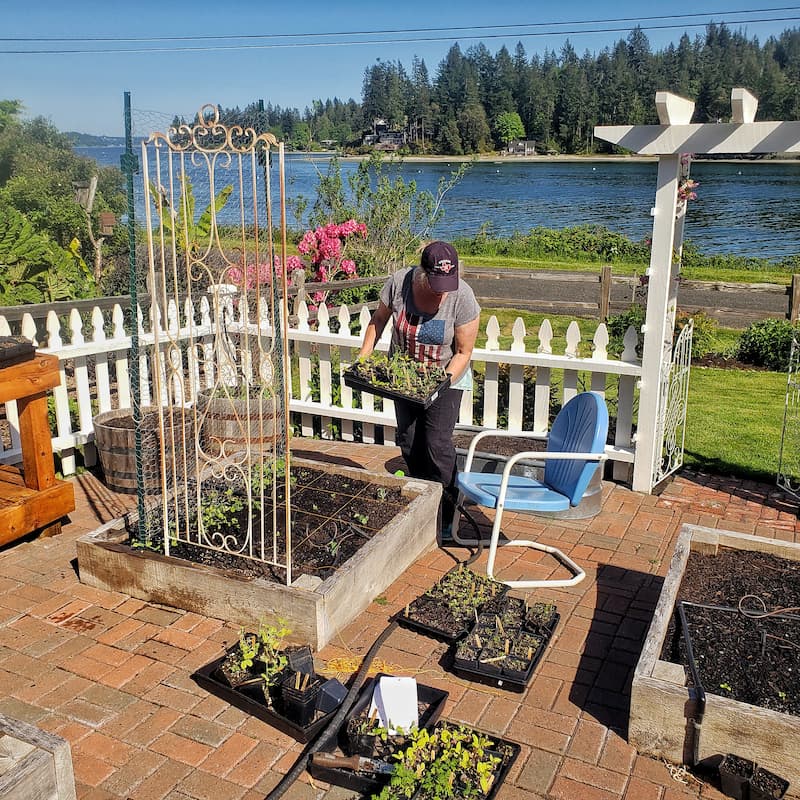
Cut flower gardens are quite different from regular flower gardens. They are all about producing flowers that can be cut and enjoyed repeatedly. They have a purpose.
I still try to keep the cut flowers looking as pretty as possible. Here are some things I consider when determining where to plant my seedlings.
Color Palettes
I like creating flower beds by color when possible. Softer color palettes are usually separated from brighter blooms.
Bloom Times
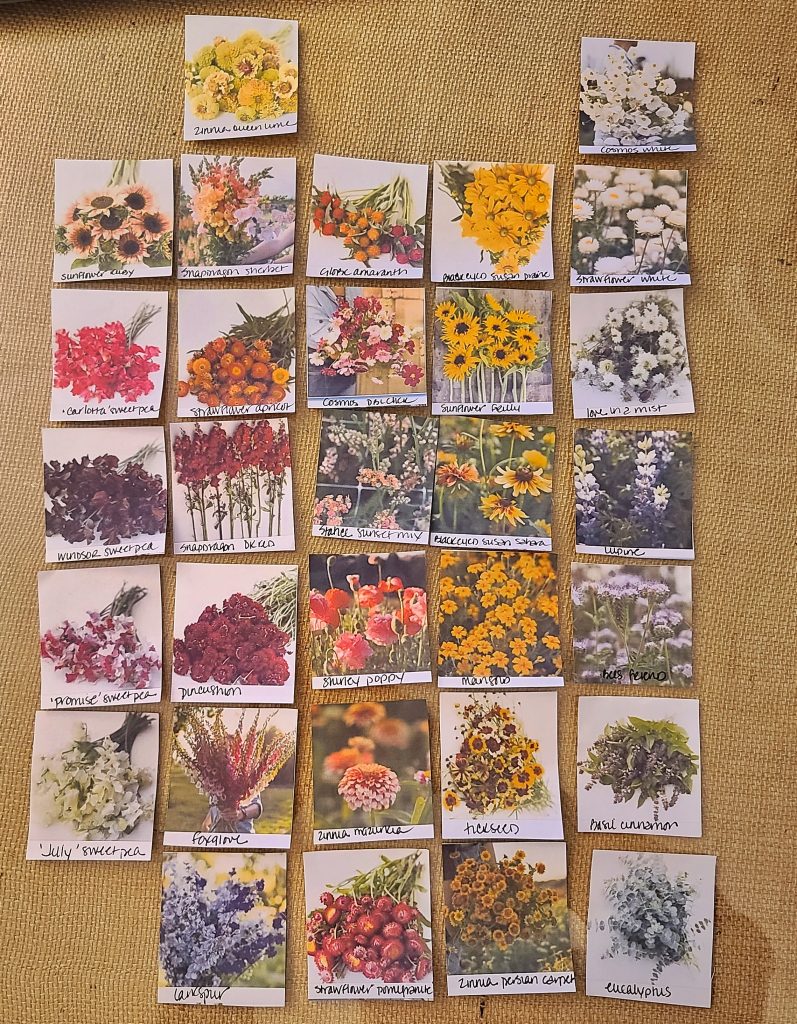
In one garden bed, I plant seedlings that bloom at different times throughout the spring and summer. That way, the beds will always have flowers growing in them, no matter what time of the season it is.
An example would be to plant sweet peas (early summer bloom) and globe amaranth (late summer bloom) together in the same bed. Then, when the sweet peas start fading at the end of July in my hardiness zone 8b, the globe amaranth will bloom and take over the bed.
Cosmos and zinnias are always great to place among various flowers, as they last for most of the season.
Height and Width
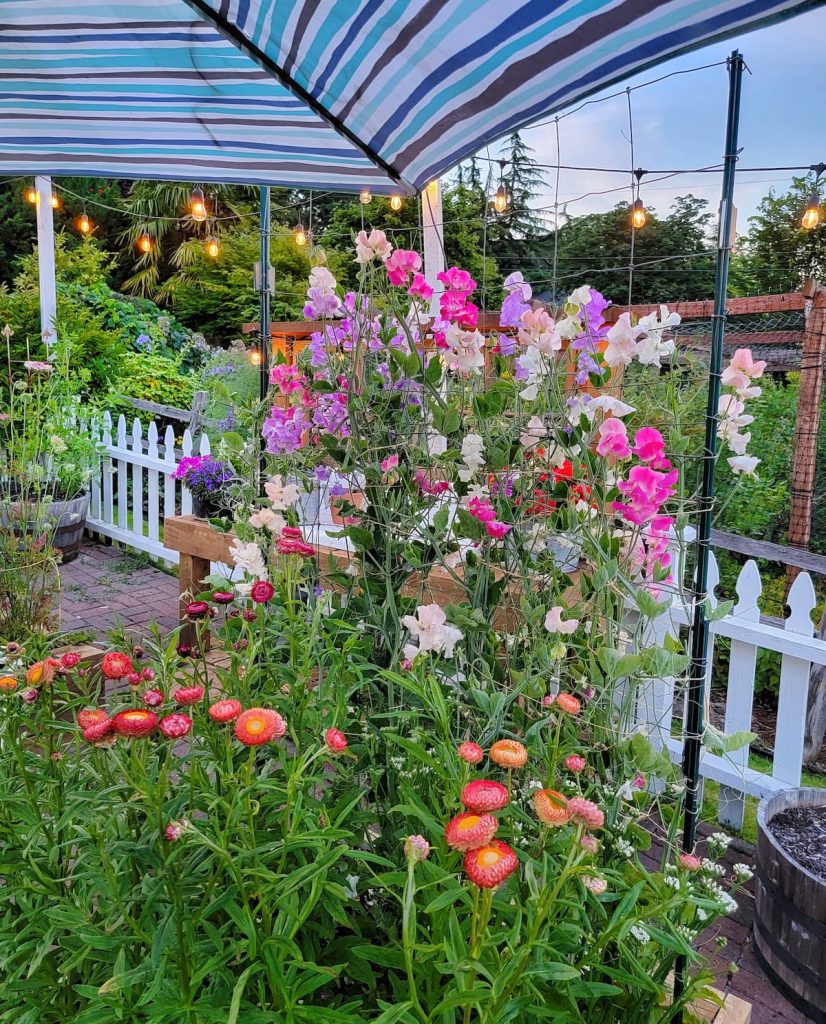
I’m a visual person, so I may do things differently.
Planning the new year’s garden is almost like a puzzle, trying to fit all the pieces in the right spaces. I use graph paper and printouts of the flower varieties I’ve picked for this year’s garden. I lay everything out, looking for possible themes and color palettes.
Keep in mind the plant’s mature height and width. It’s essential to keep the taller flowers towards the back of the beds so they won’t shadow the others around them.
I made the mistake of planting very tall sweet peas in the center of the raised bed one year, not realizing that when the afternoon sun hit a certain direction, the flowers on the other side of the sweet peas were blocked entirely from the sun.
Staking and Netting
Those plants needing staked or netted are usually grown together in one bed so I can corral them.
3. Calculate the Space Needed for Your Flower Seeds
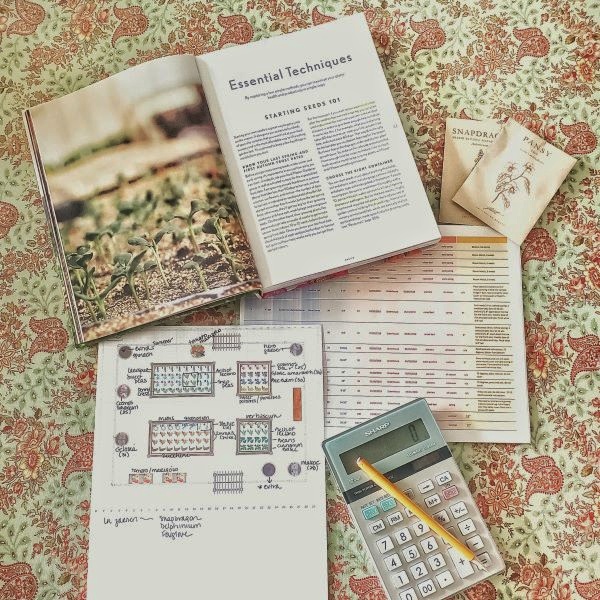
Calculating the garden space you have to work with is important in deciding how many flower seed varieties you can grow.
Never shop a seed catalog before knowing how much dedicated garden space you must work with. This is where you can get into trouble!
When estimating the space they will take up, consider the number and type of plants. To ensure healthy plant growth, each seed should have at least 6-8 inches of space surrounding it. If planting in rows, make sure there are 12-15 inches between them for easy access and maintenance.
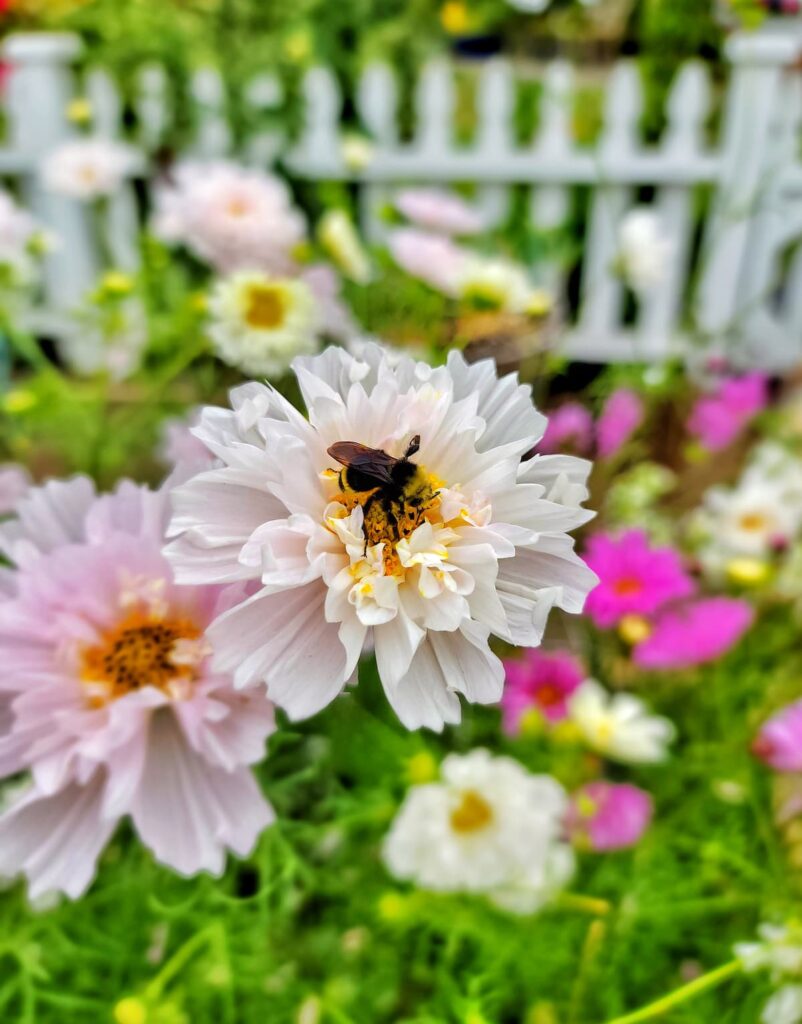
Factor in any additional plants necessary to support pollinators such as bees or butterflies. Knowing exactly how much space is available will help you determine which varieties of flowers will work best for your garden.
The back of the seed packet indicates how much space to leave between each plant. However, I tend to space the seed starts just a little closer together than recommended for certain varieties that aren’t as bushy or susceptible to mildew.
This gives me more room, and I don’t get as many weeds growing in the beds. But make sure you’re familiar with the types of flowers you’re growing before you make spacing decisions other than what the directions recommend.
4. Design Your Cut Flower Garden Layout
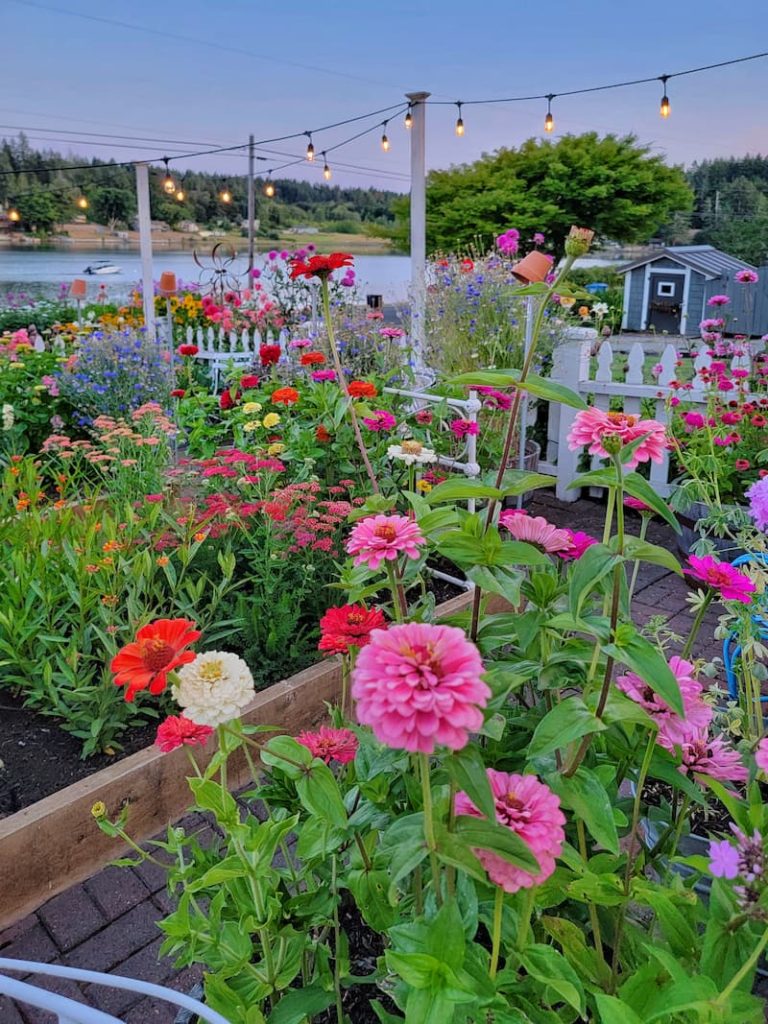
A thoughtfully designed garden enhances the visual appeal and makes it easier to care for your plants. Here are some key steps to help you design your cut flower garden layout.
Define Your Garden Space
Start by clearly defining the boundaries of your flower garden. You can create defined borders with garden edging, stones, or other materials.
This adds structure and prevents grass and weeds from encroaching on your flower beds.
Consider the Natural Landscape
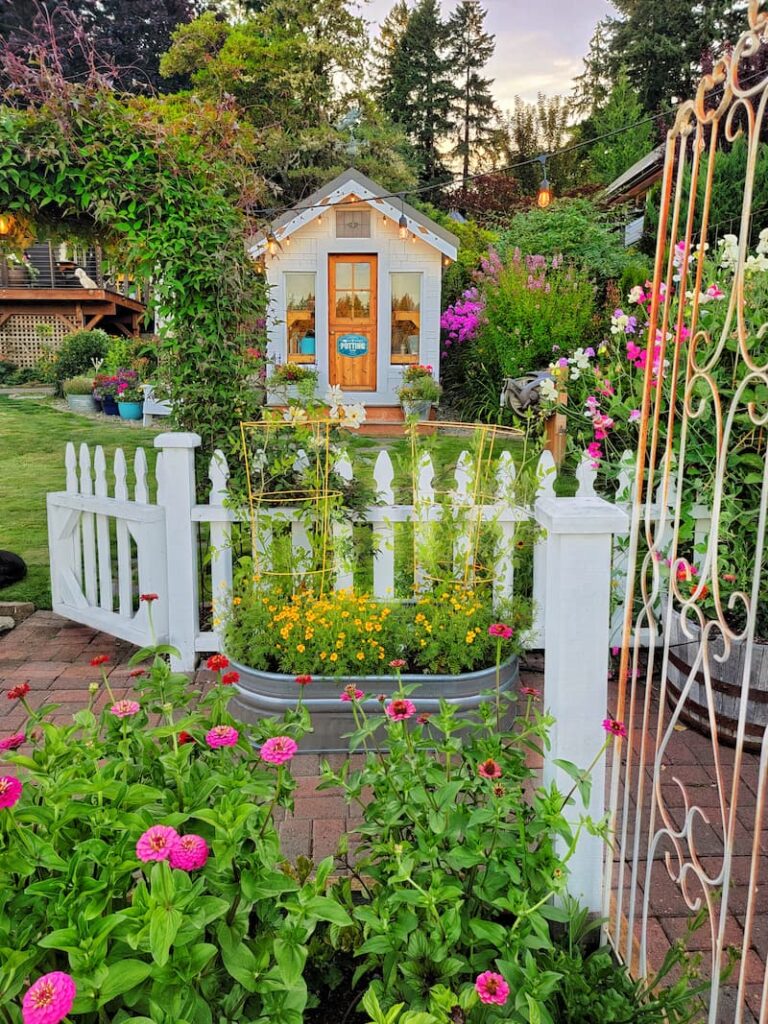
Consider the landscape features of your garden, such as trees, shrubs, or architectural elements like fences and walls. These elements can serve as backdrops or focal points for your flower beds.
Group Plants Thoughtfully
Group flowers with similar water and sunlight requirements together. This makes it easier to care for your garden, as you can provide the right conditions for each group without over- or under-watering or shading.
Create Paths and Access Aisles

Design your garden layout with paths and access aisles. These make it easier to reach and care for your flowers and add visual interest. To define these pathways, You can use gravel, stone, or wood chips.
Incorporate Focal Points
Add focal points to your garden, such as a decorative trellis, a birdbath, or a seating area. These elements can be eye-catching features and create a sense of balance and harmony in your garden design.
Think About Seasonal Interest
Plan for year-round interest by selecting flowers that bloom at different times throughout the seasons. This ensures that your garden remains appealing and colorful throughout the year.
Balance Color and Texture
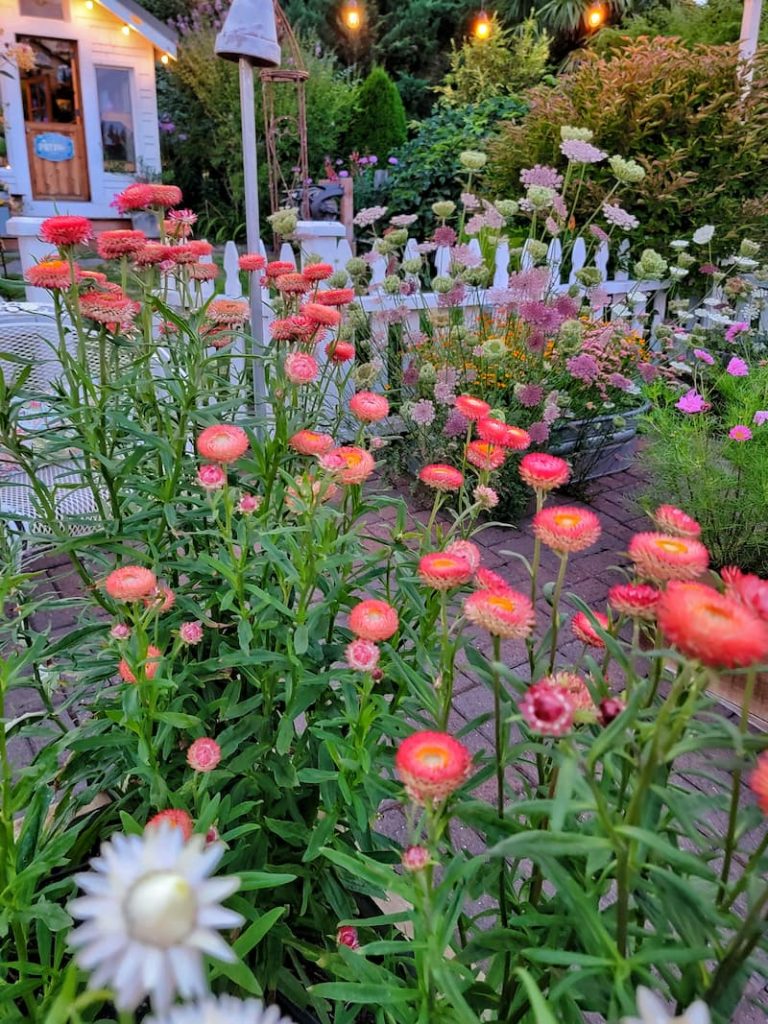
Consider the color palette and texture of your flower varieties. Mixing complementary colors and varying textures can create a visually stunning garden.
Think about the height of your plants, with taller ones placed strategically to create depth and visual interest.
Sketch Your Garden Design
Before planting, sketch out your garden design on paper. This will help you visualize the layout and allow you to make adjustments as needed.
Start Planting

Once you’re happy with your garden design, it’s time to start planting your flowers. Follow your plan, giving each plant the appropriate spacing and care.
Designing a cut flower garden plot may seem intimidating, but it can be easy and fun with careful planning and the right steps!
5. Decide What Flower Seeds to Order
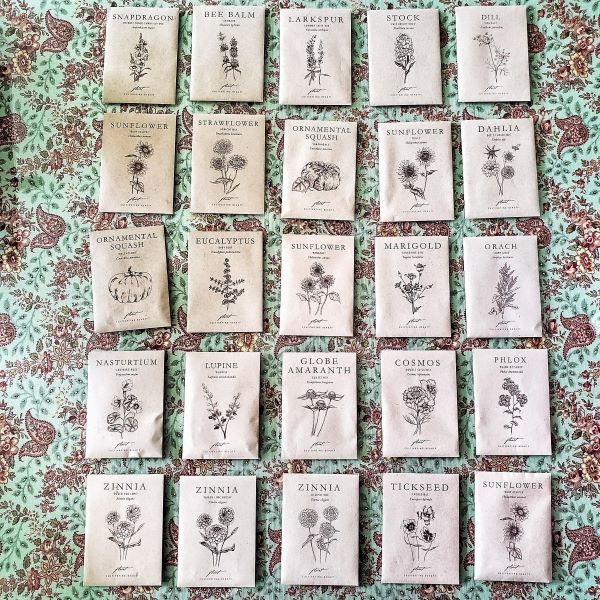
When planning a cut flower garden, an important step is choosing the right varieties of flowers for cutting. A wide variety of annuals and perennials make excellent cut flowers, so selecting blooms that will work best for your climate and preferences is important.
When selecting varieties for cutting, consider the size, shape, color, and scent of each bloom. It’s also helpful to look at how long each flower lasts after being cut from its stem and whether it attracts beneficial insects or birds to your garden.
Once you’ve chosen your favorite flower varieties for cutting, you can start preparing your soil and planting.
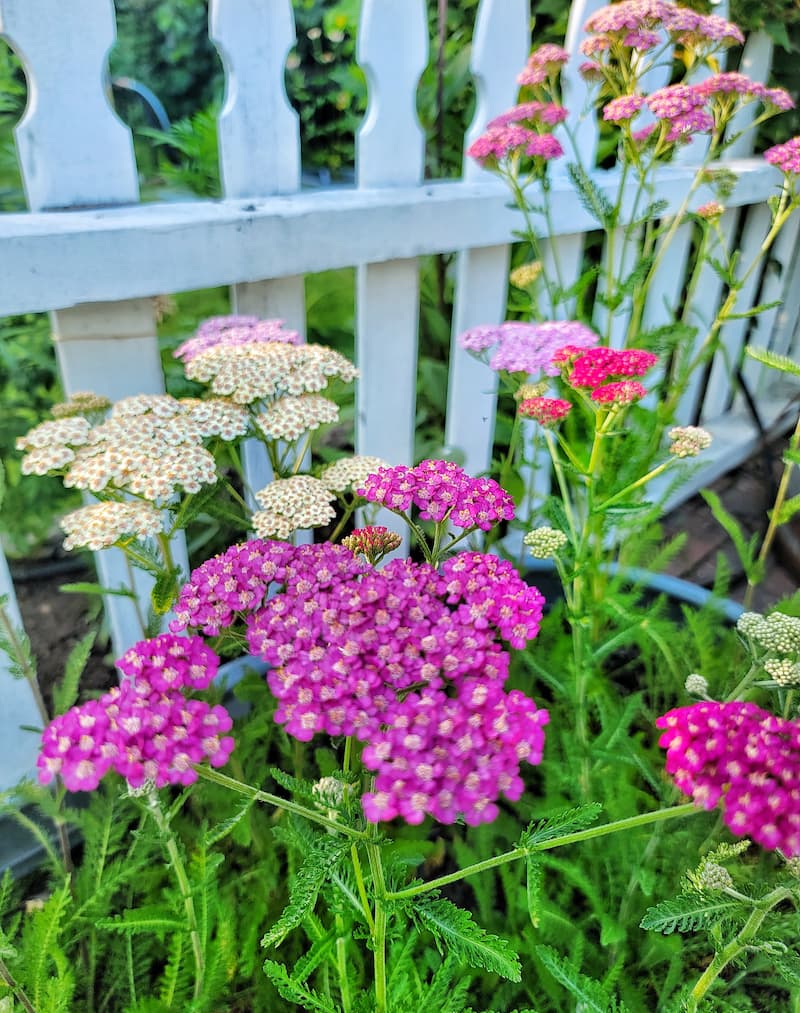
If you’ve had a garden in the past, look back in your garden journal to see what worked and what opportunities there were.
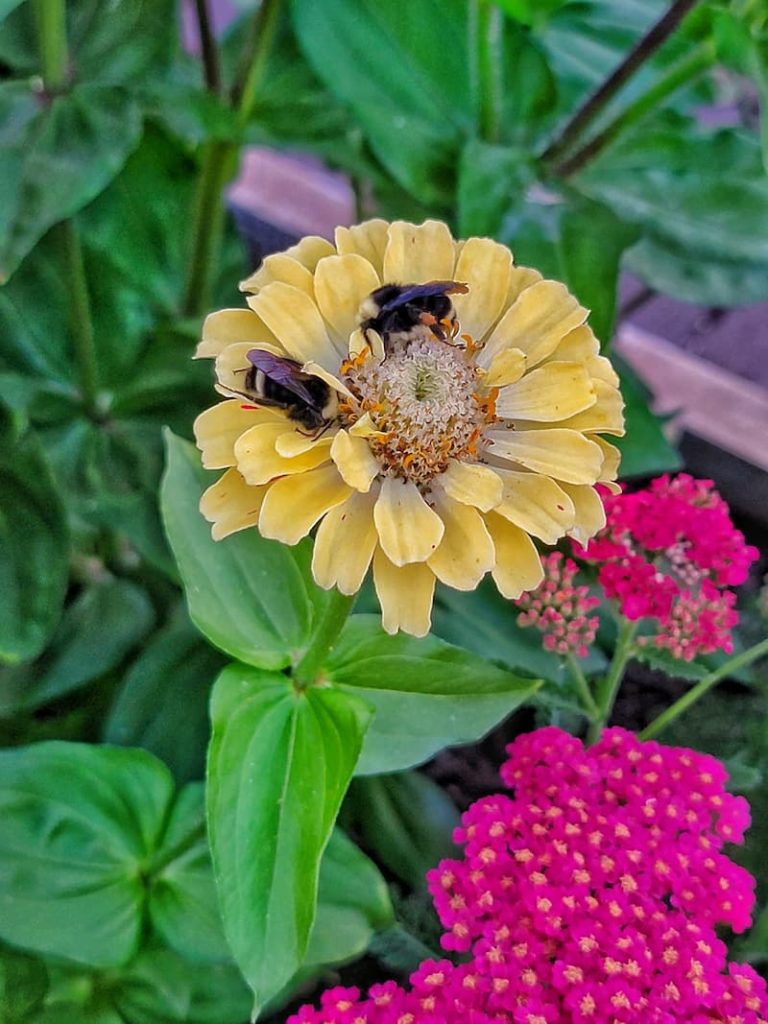
Of course, you will want to stick with the flowers that performed best for you. But you may want to cut a couple of varieties from the list. That way, you can try a couple of new ones. It’s always fun to try something new, don’t you think?
Special Considerations for Planning Cut Flower Garden Layouts
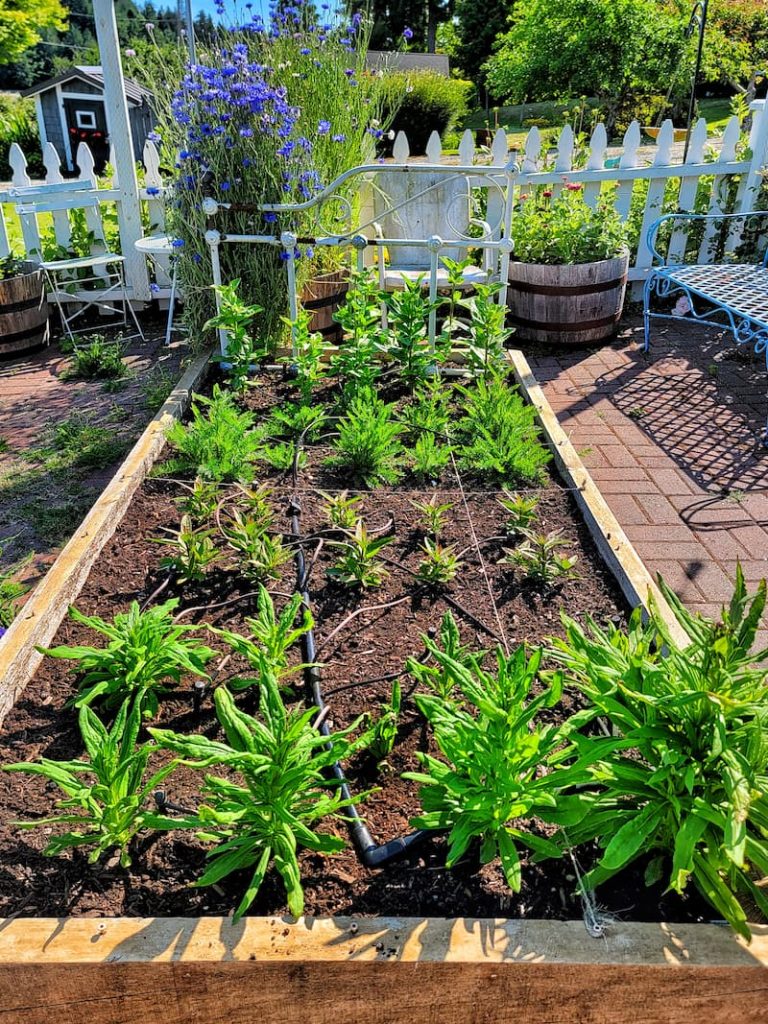
Planning a cut flower garden layout can be tailored to suit various needs and circumstances, such as gardening levels and space constraints.
Beginner Cut Flower Garden Layouts
For beginners, simplicity and manageable size are key.
Consider starting with a rectangular or square-shaped garden bed, which is easier to manage than more complex designs.
Choose a mix of easy-to-grow annuals like zinnias, sunflowers, and marigolds. Plant them in rows or blocks for a straightforward layout that’s visually appealing and low maintenance.
Small Space Cut Flower Garden Layouts
For those gardeners with limited space, container gardening or vertical gardening is a great option.
Use pots, hanging baskets, or trellises to grow flowers vertically, maximizing space. Compact, dwarf varieties of flowers are ideal for small spaces.
Consider staggered planting times to ensure continuous blooms throughout the season.
SHOP GARDEN CONTAINER IDEAS
Easy to Grow Cut Flowers for the Beginner
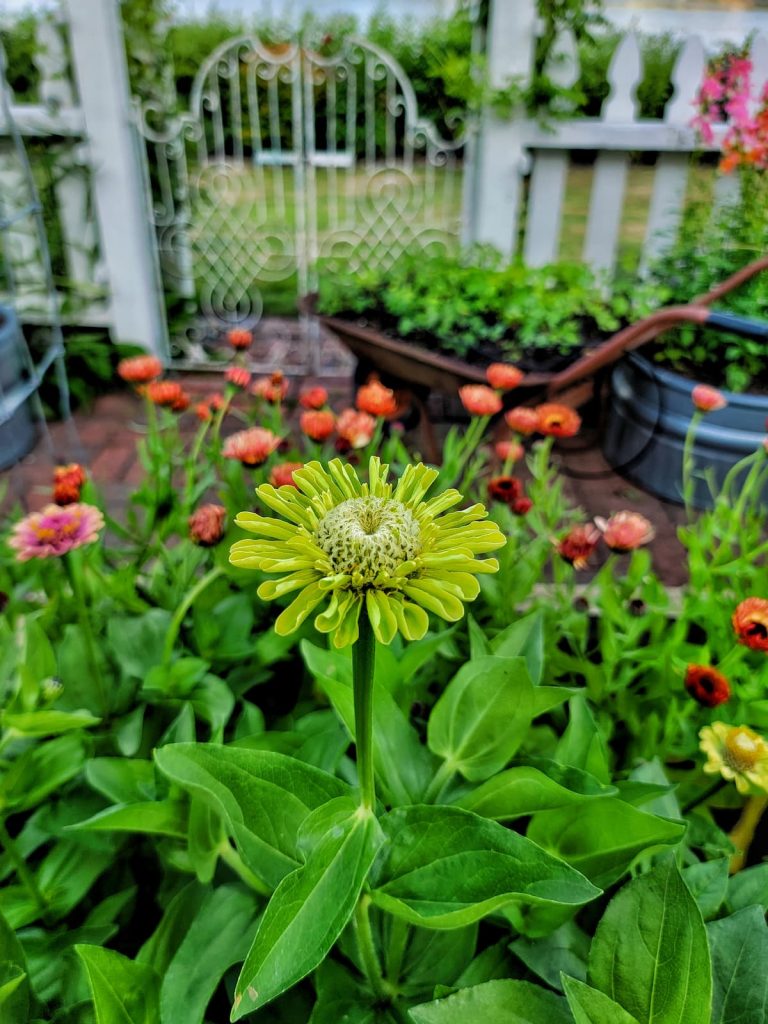
If this is your first time starting a cut flower garden from seed, you may be intimidated by the thought of the entire process. But I’m here to make it easier for you!
Below are some of my favorite easy-to-grow flowers. Although they require little effort to grow, they are not lacking in beauty.
Zinnias
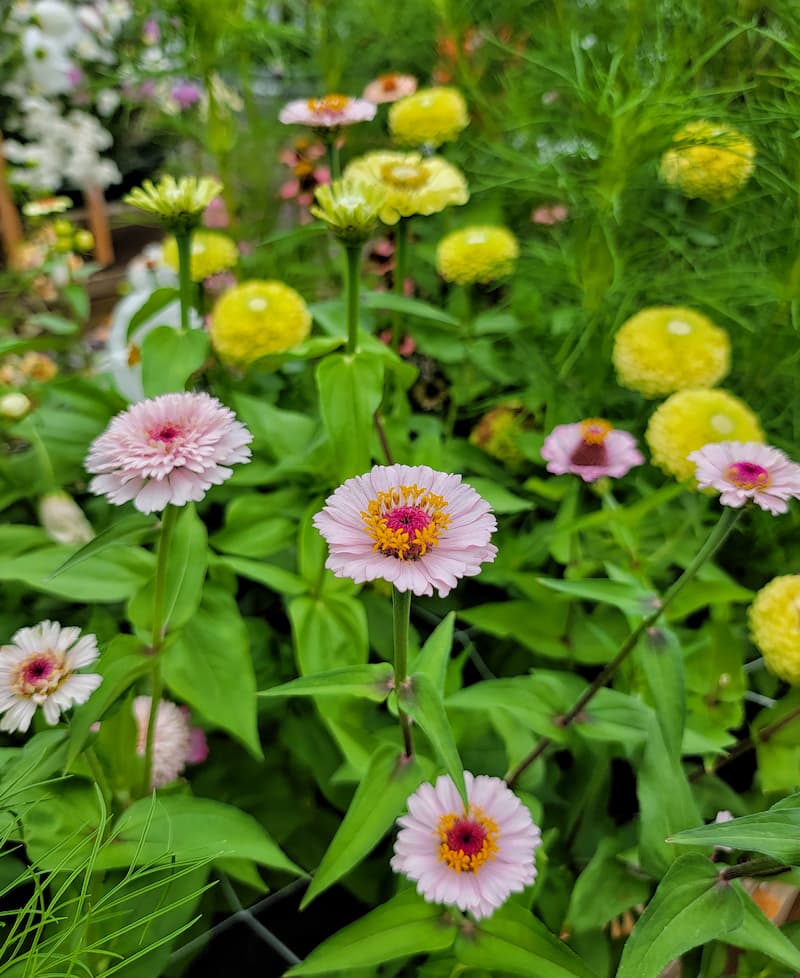
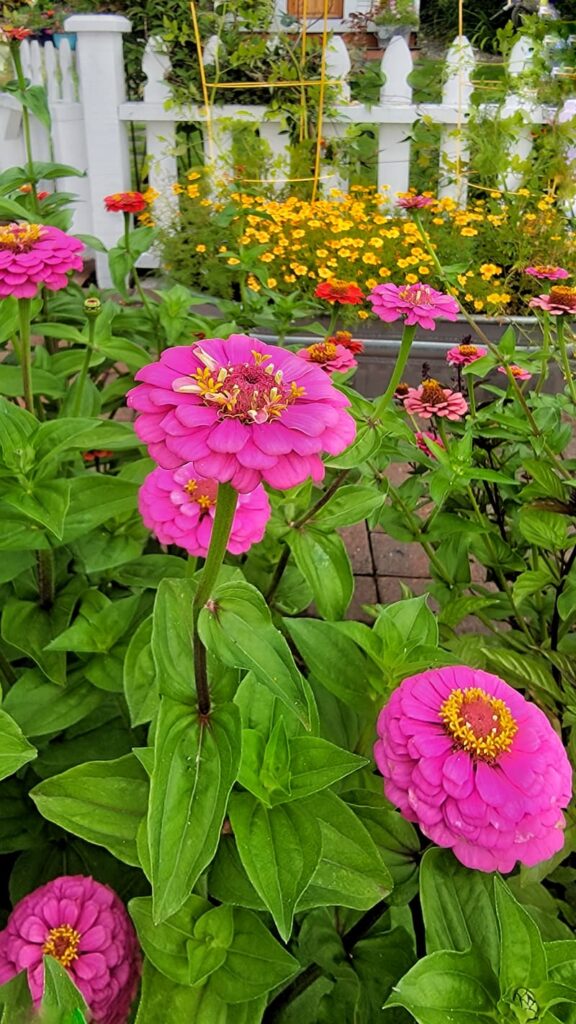
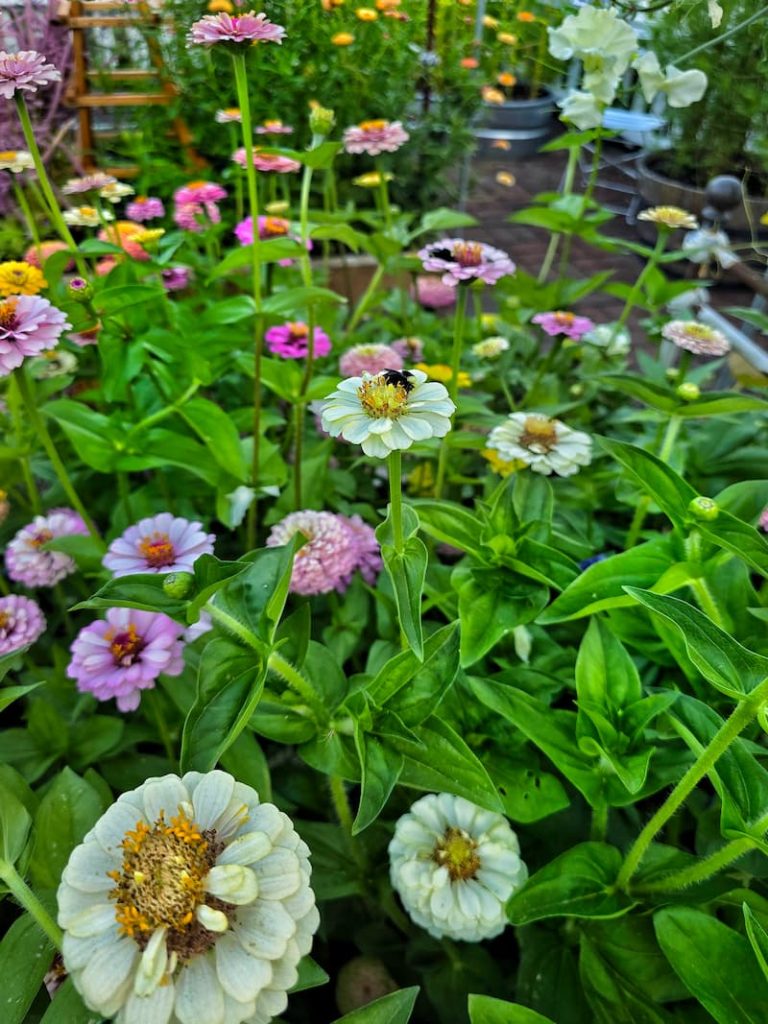
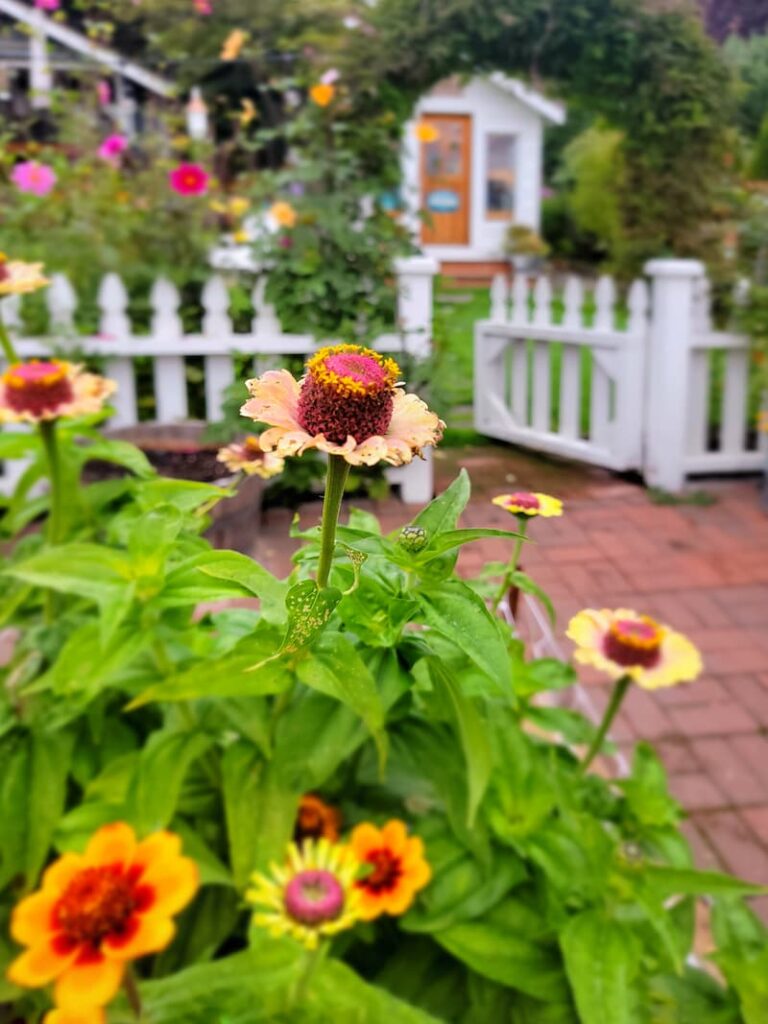
Cosmos
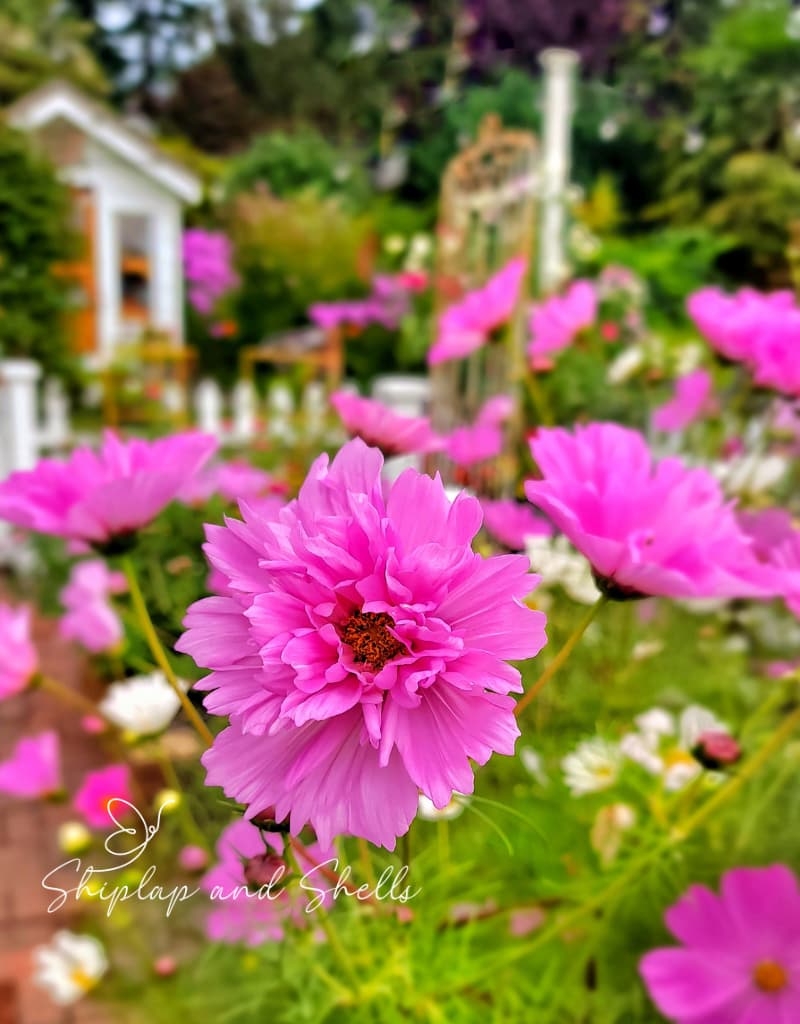
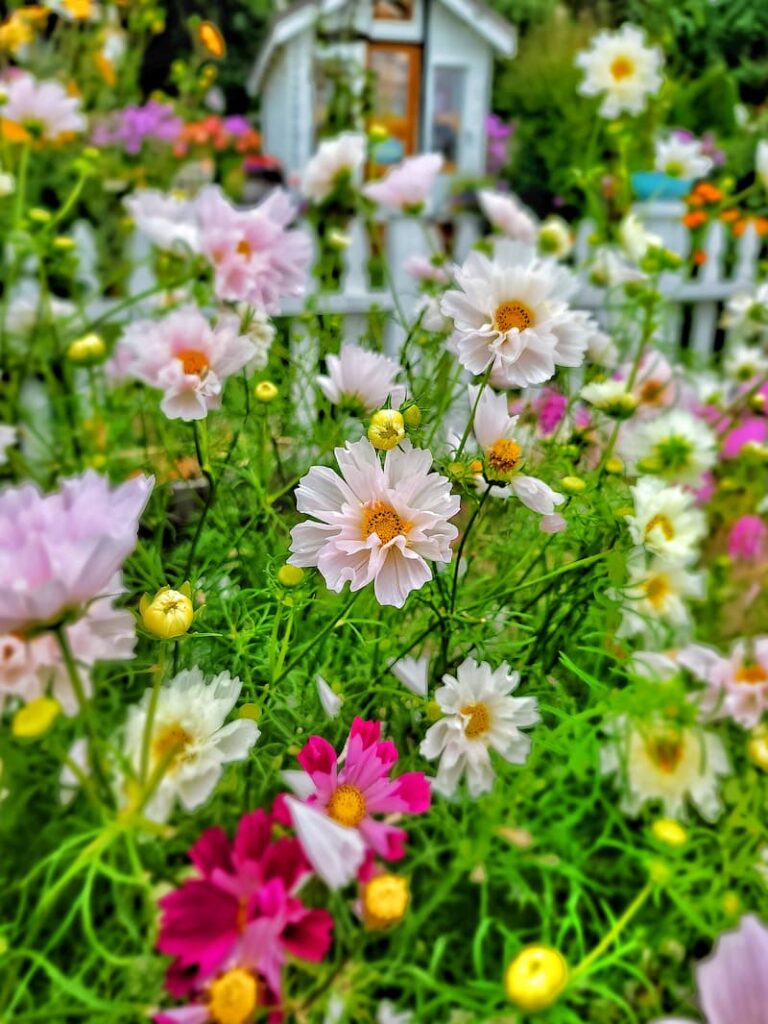
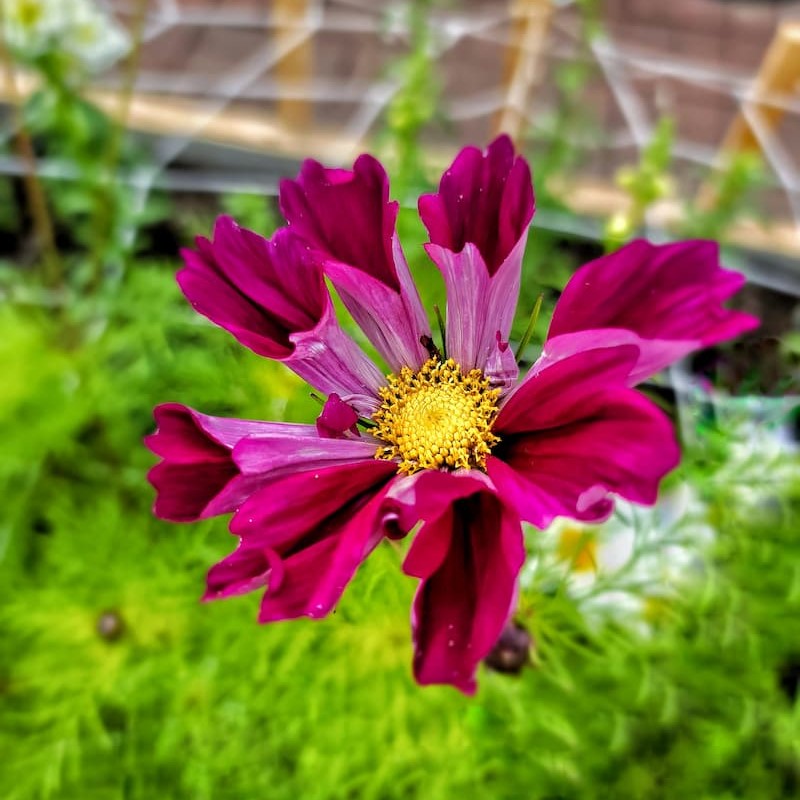
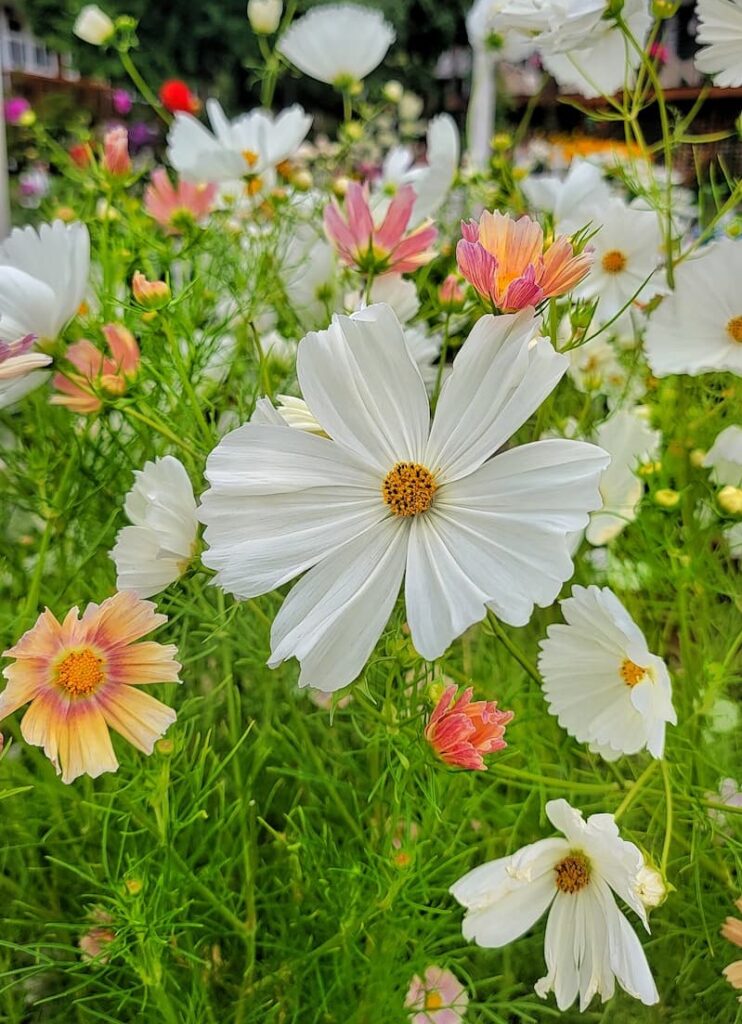
Sunflowers
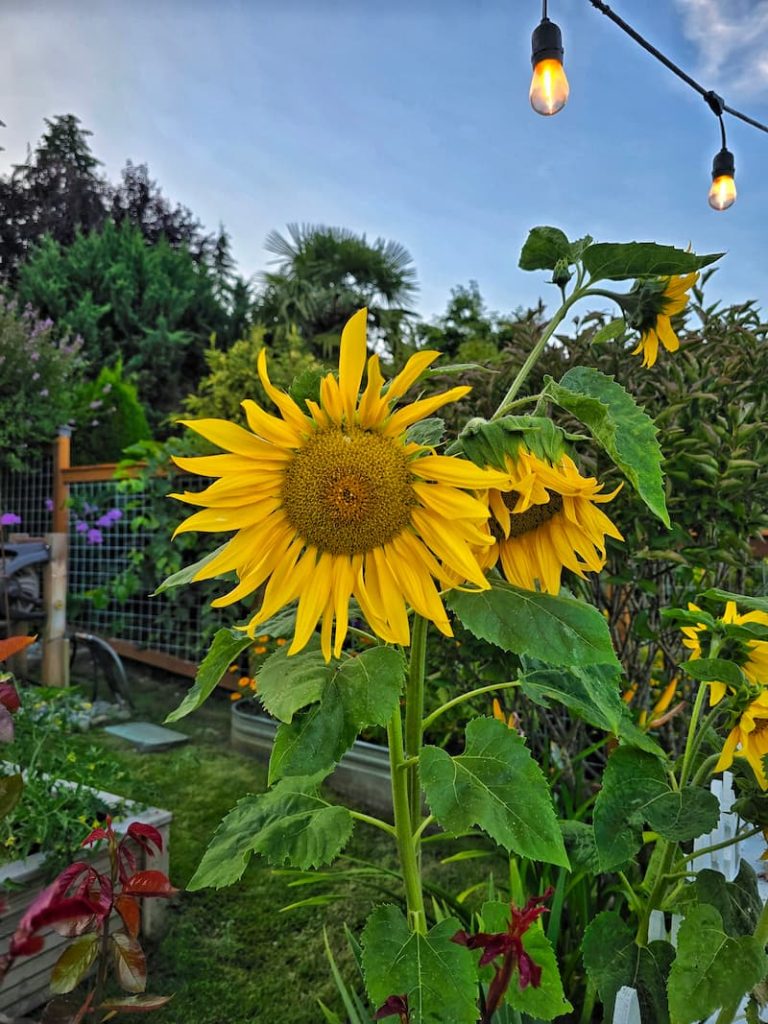
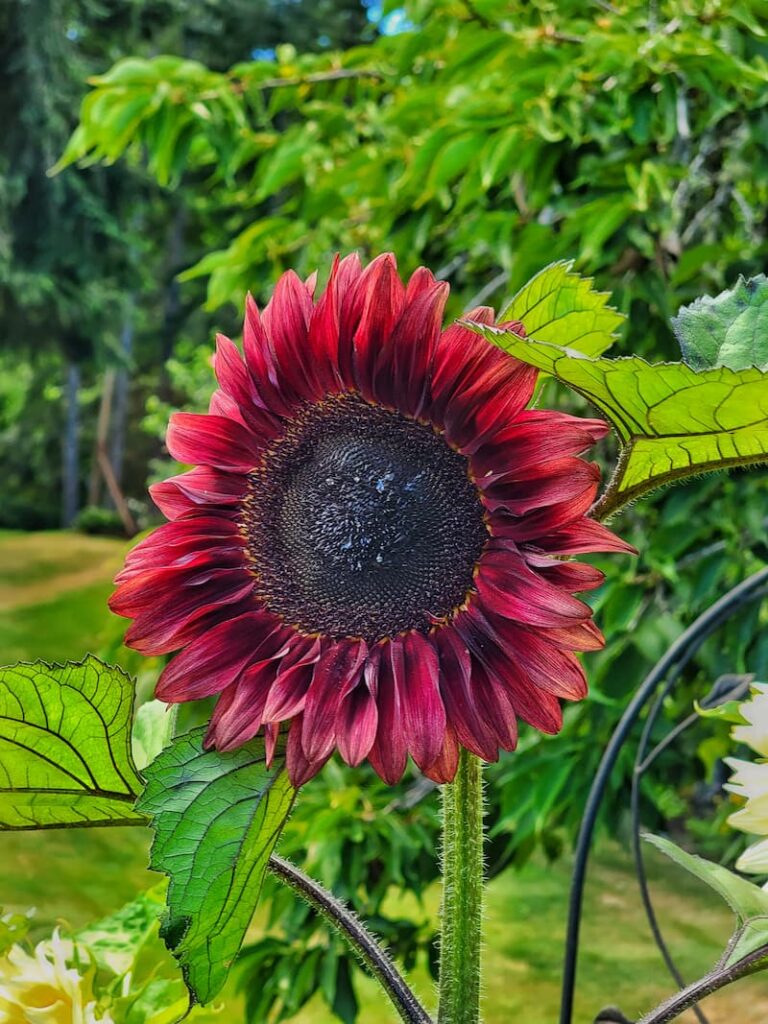
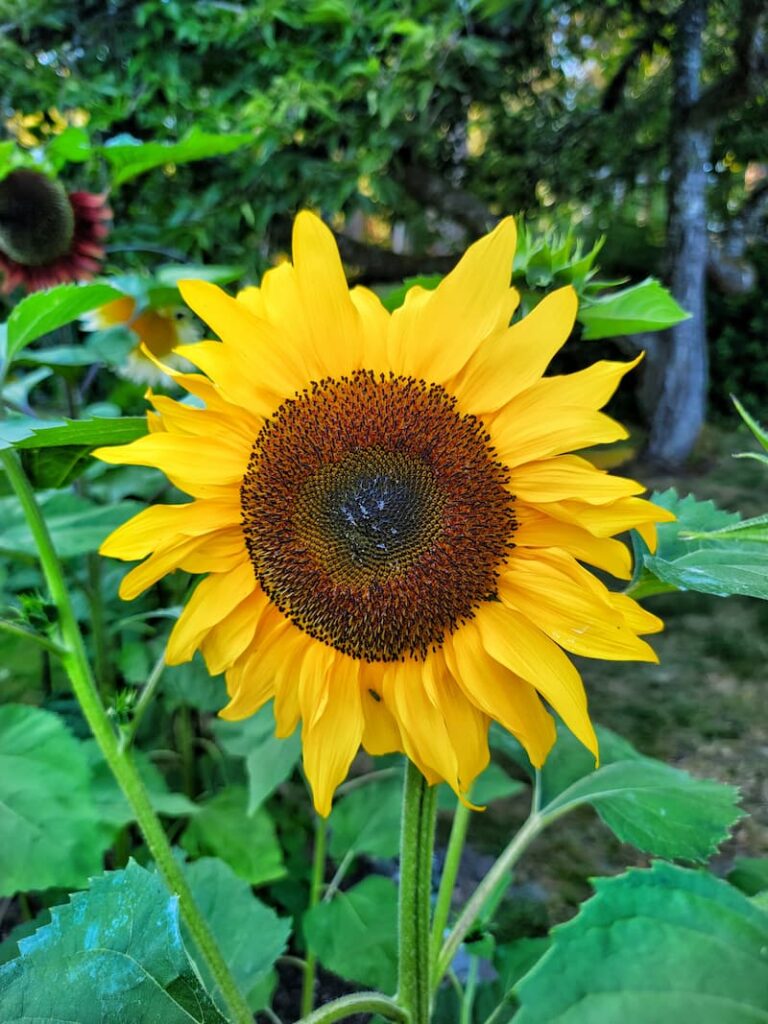
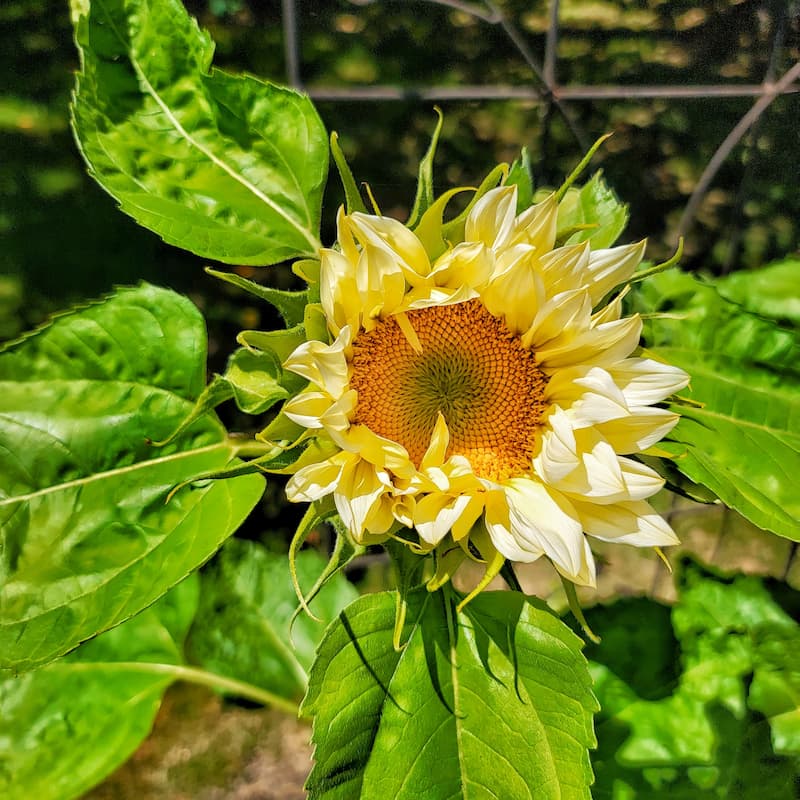
Strawflowers
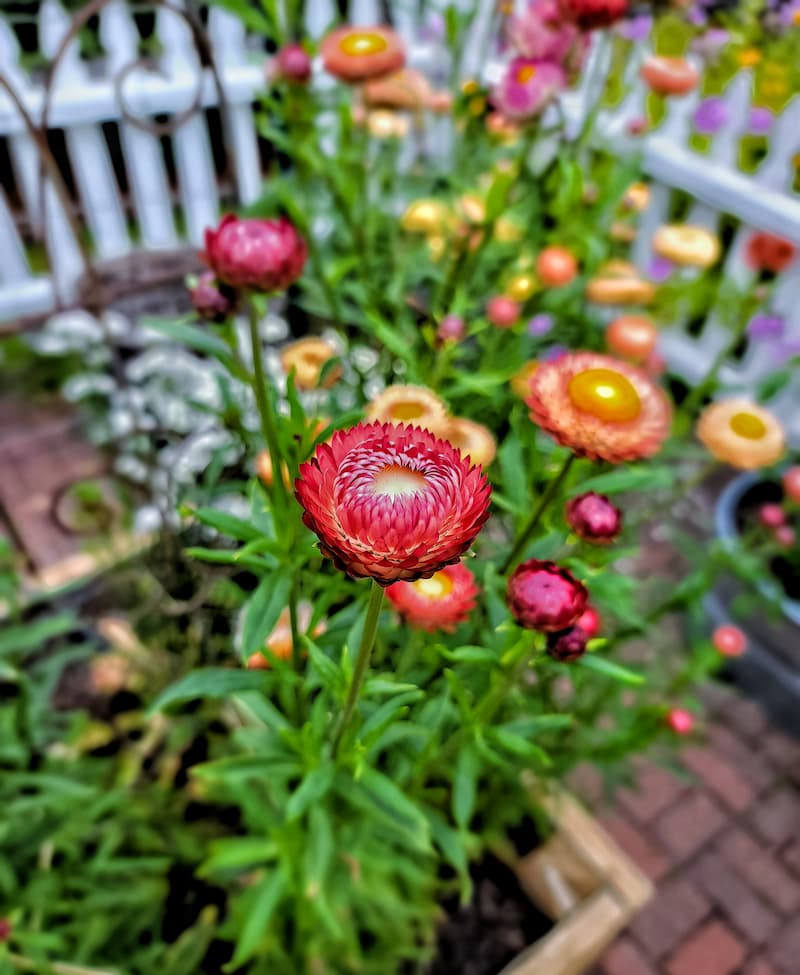
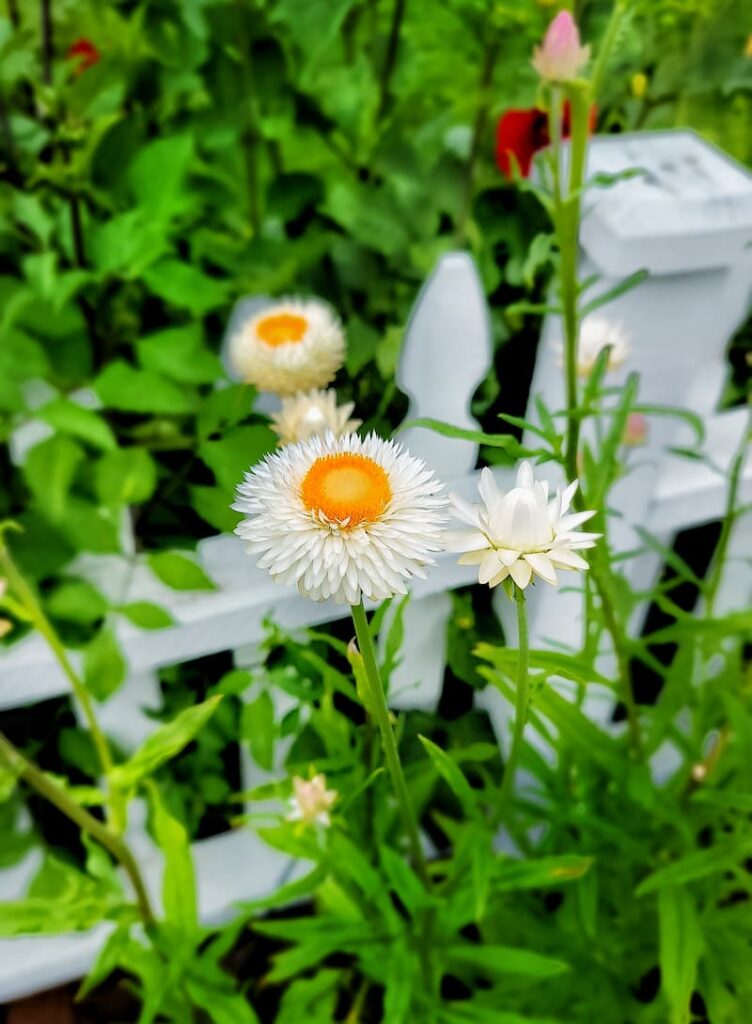
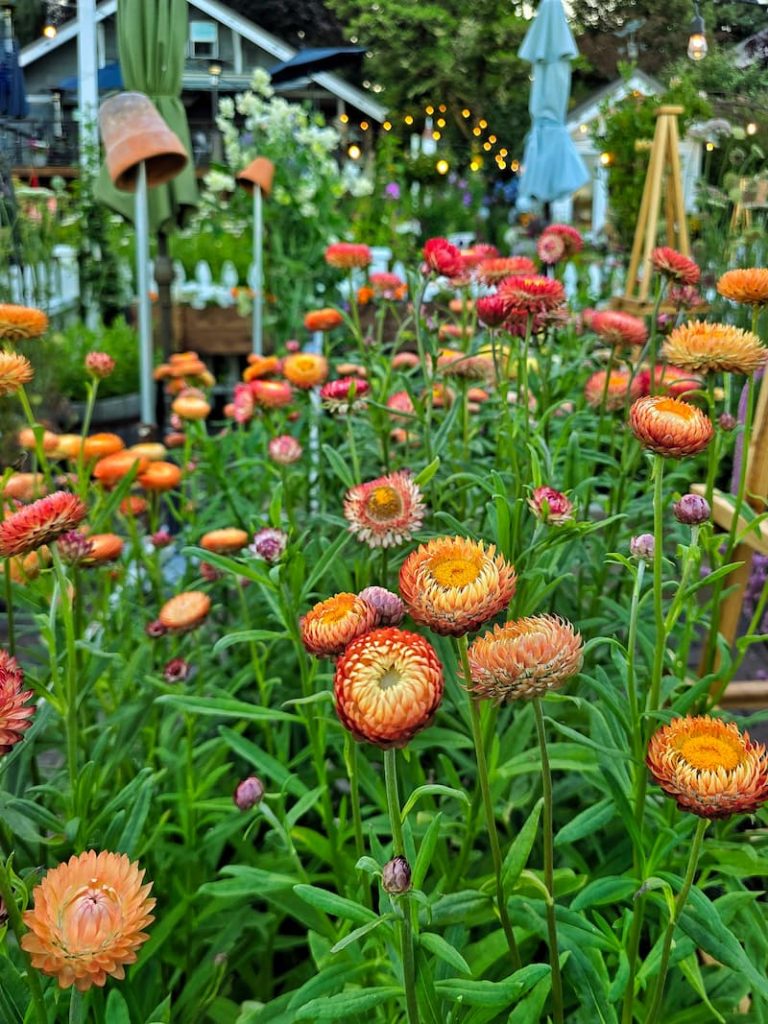
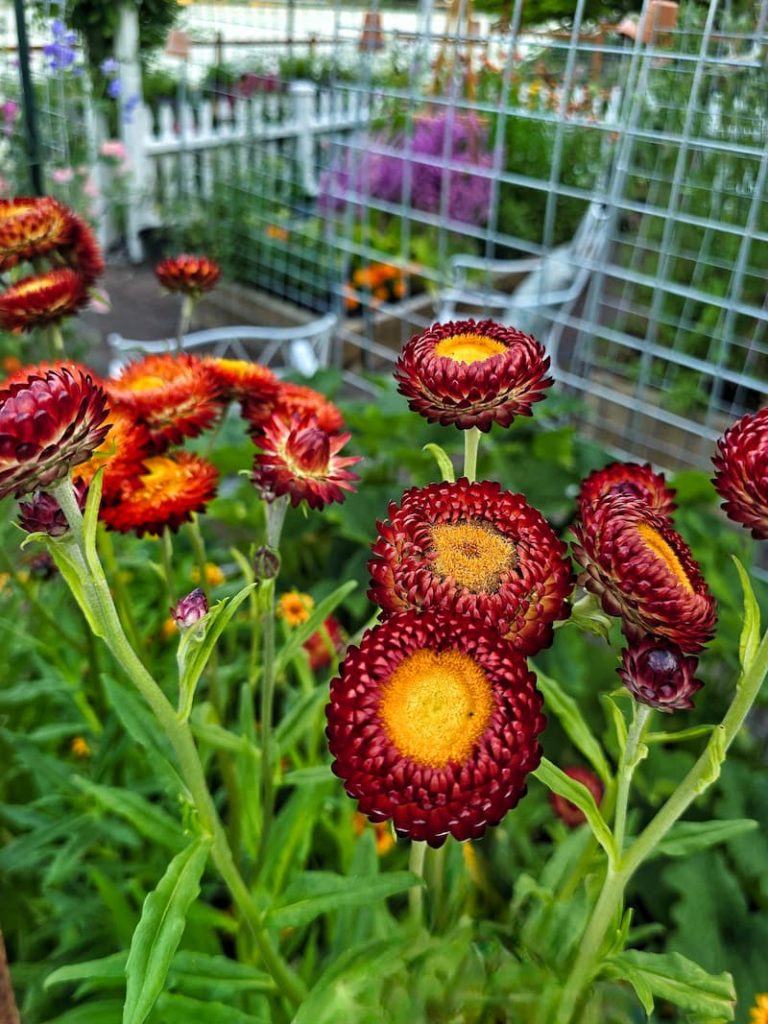
Sweet Peas
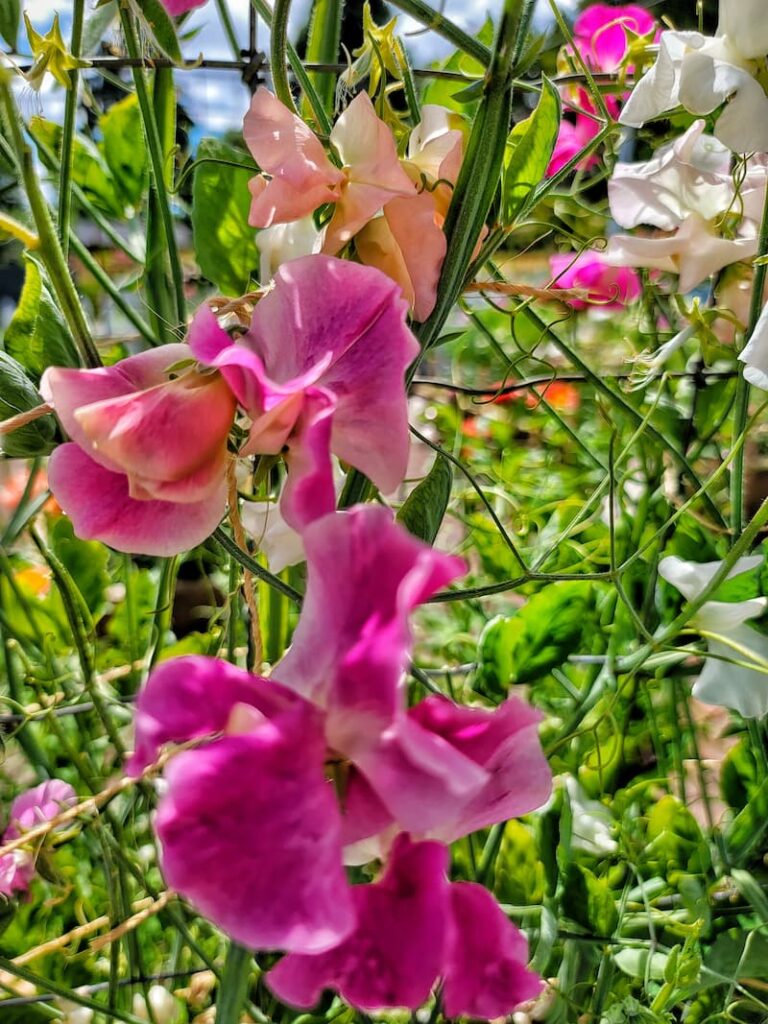
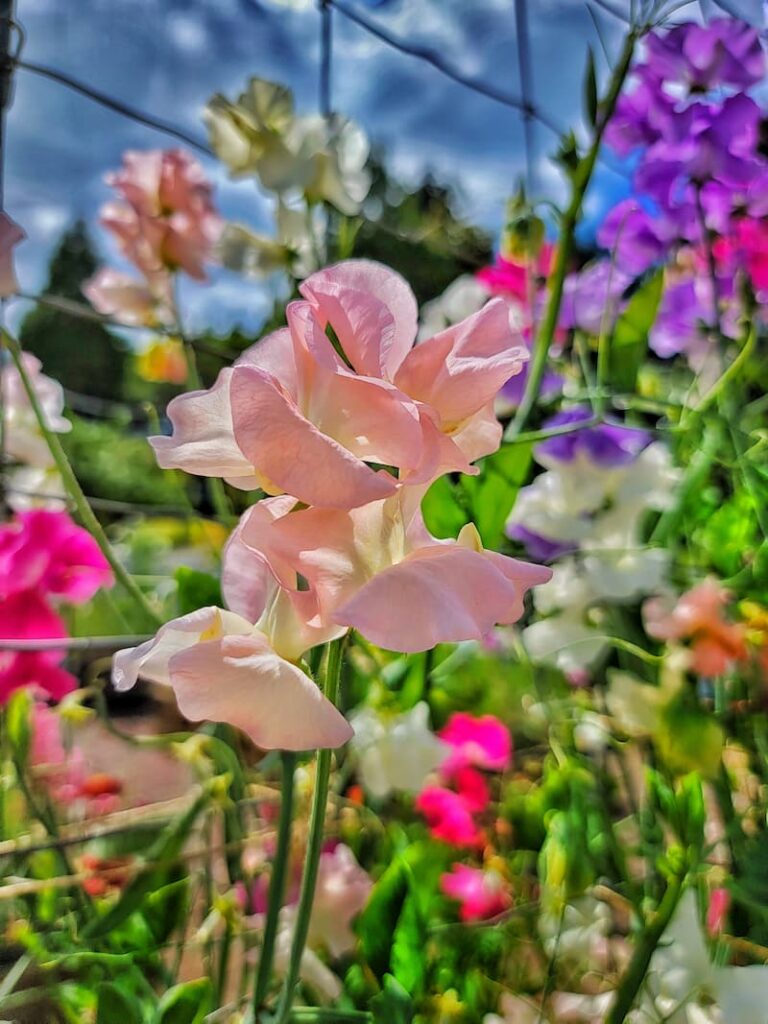
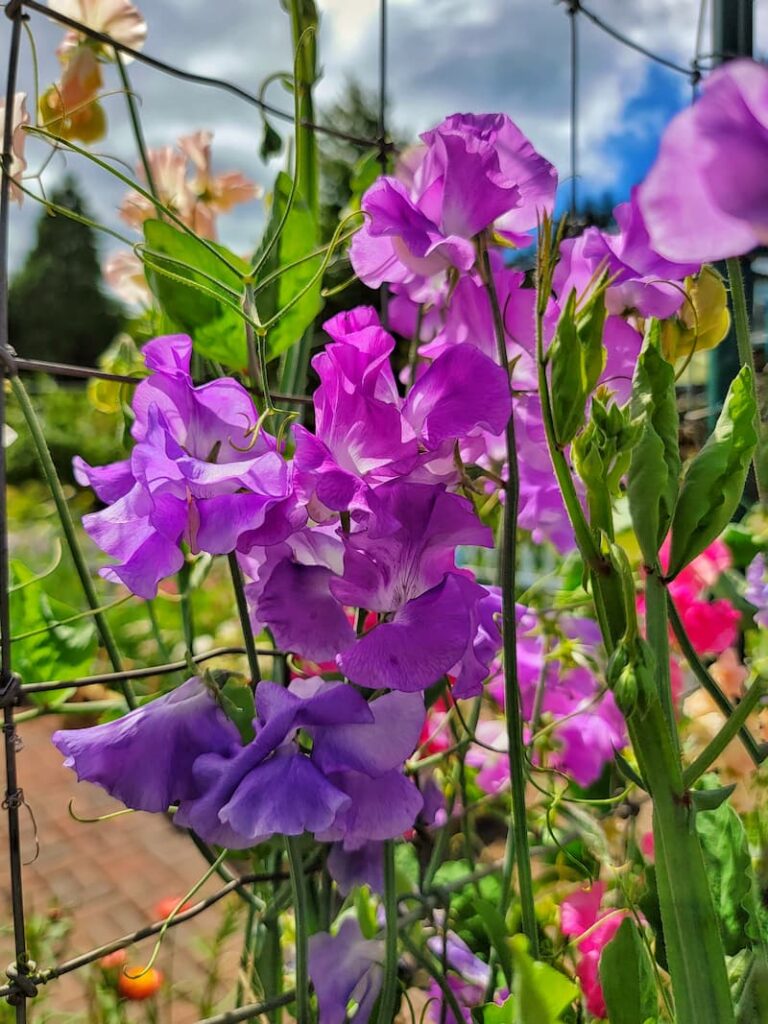
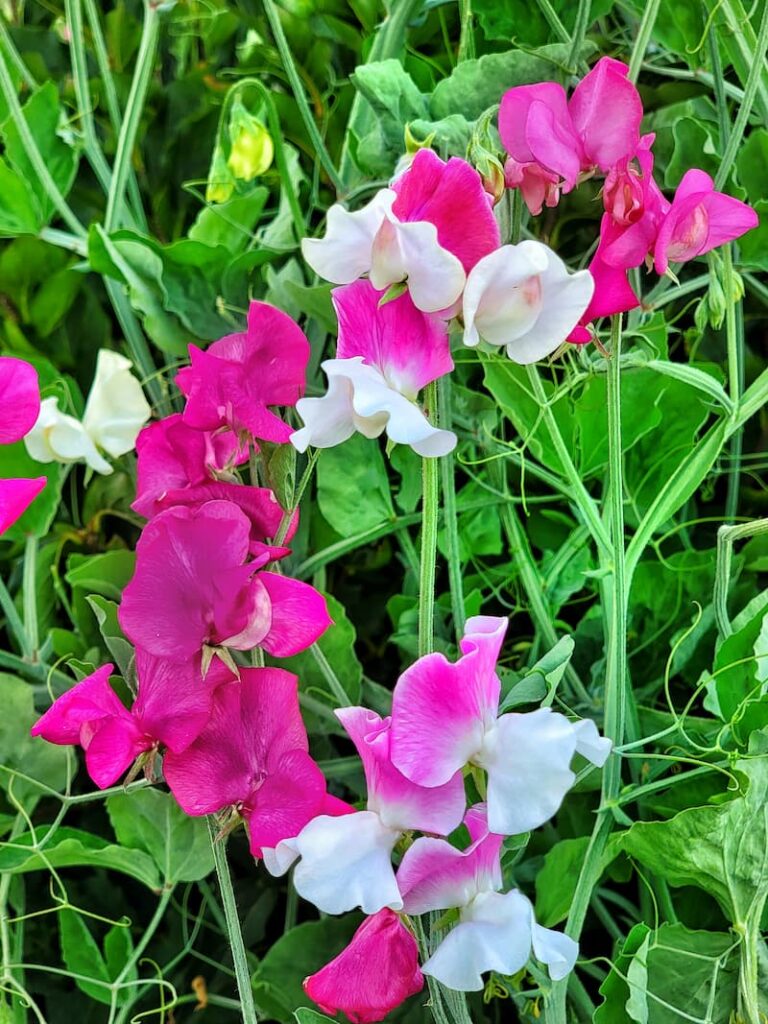
Snapdragons
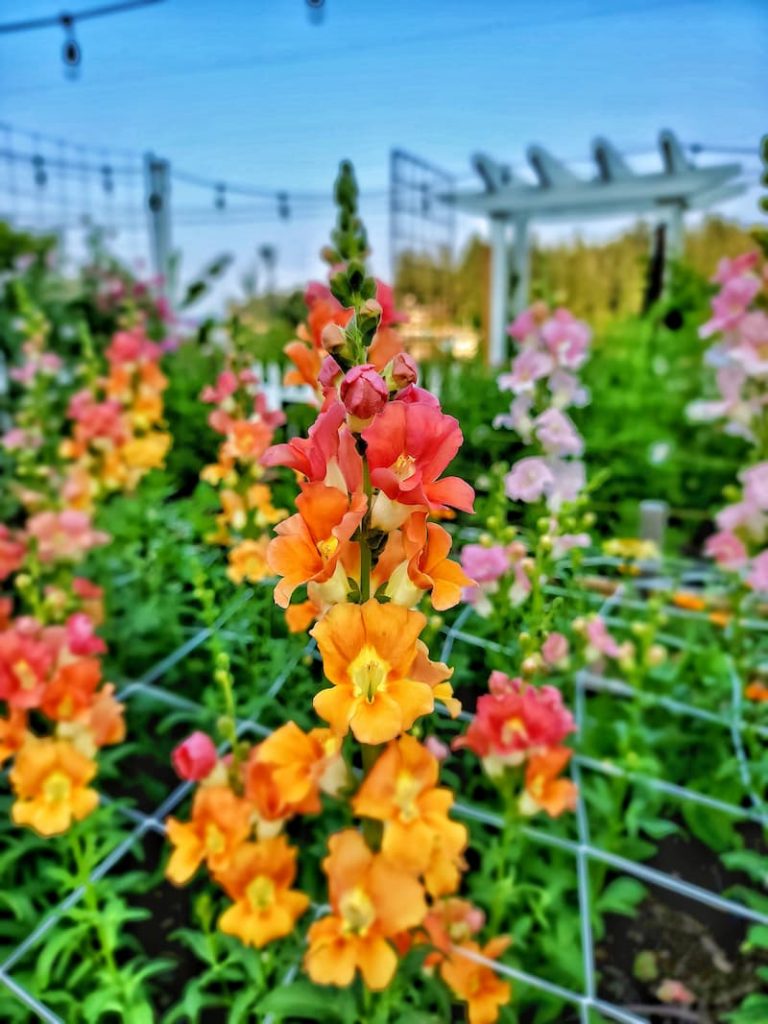
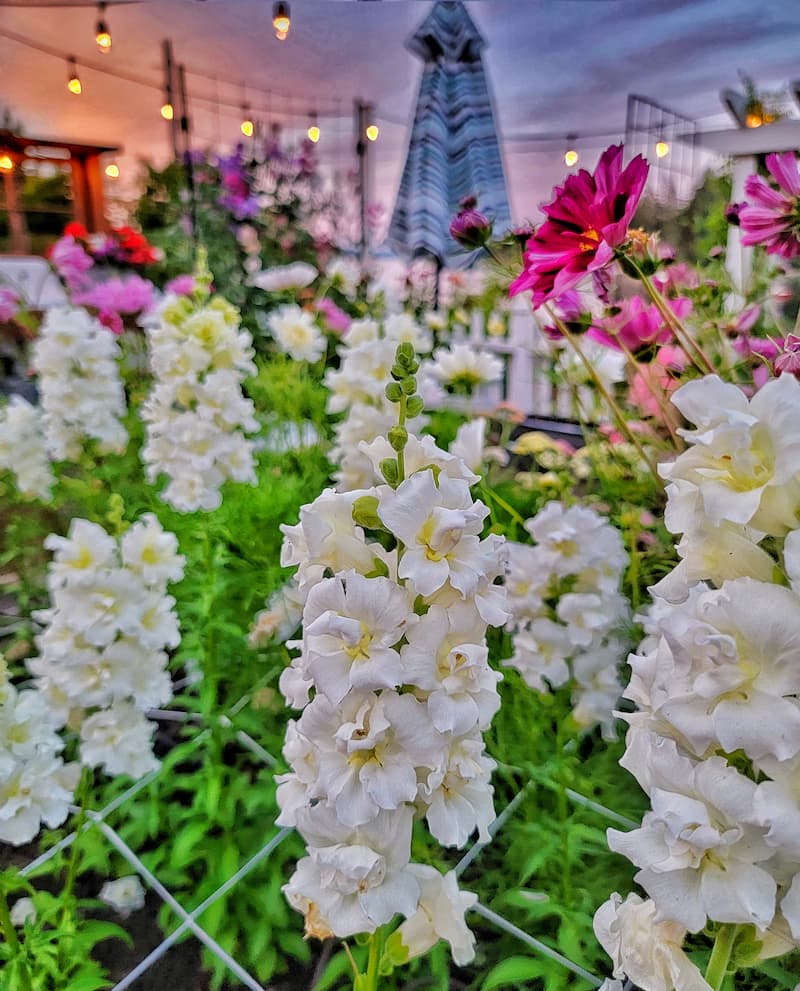
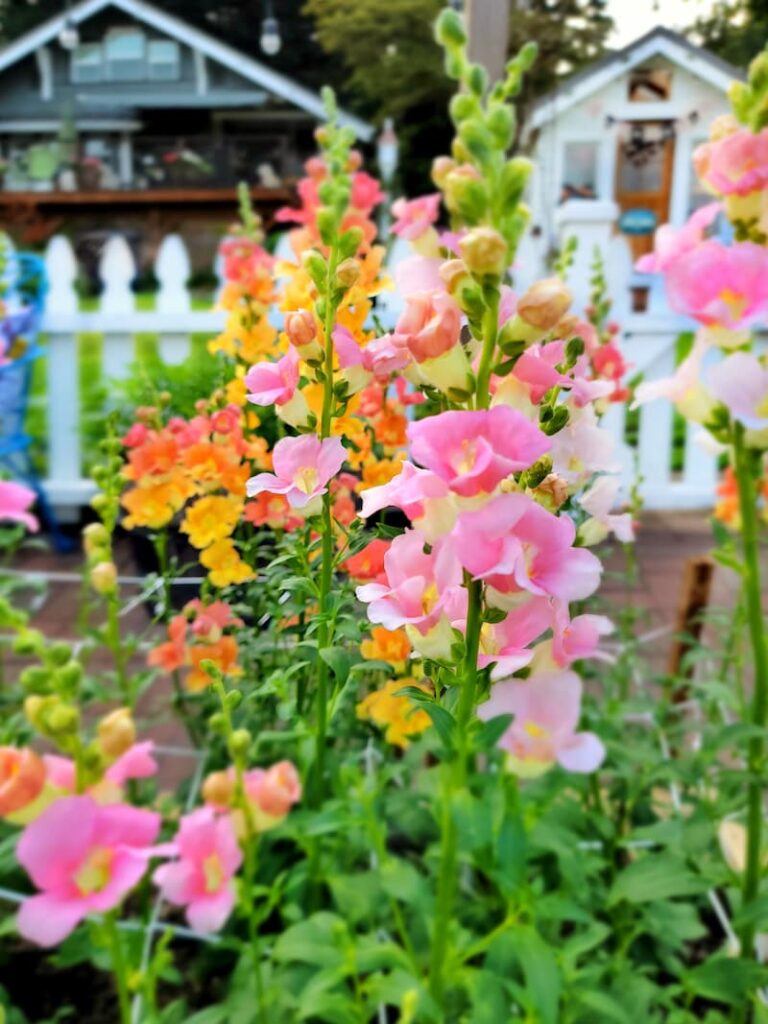
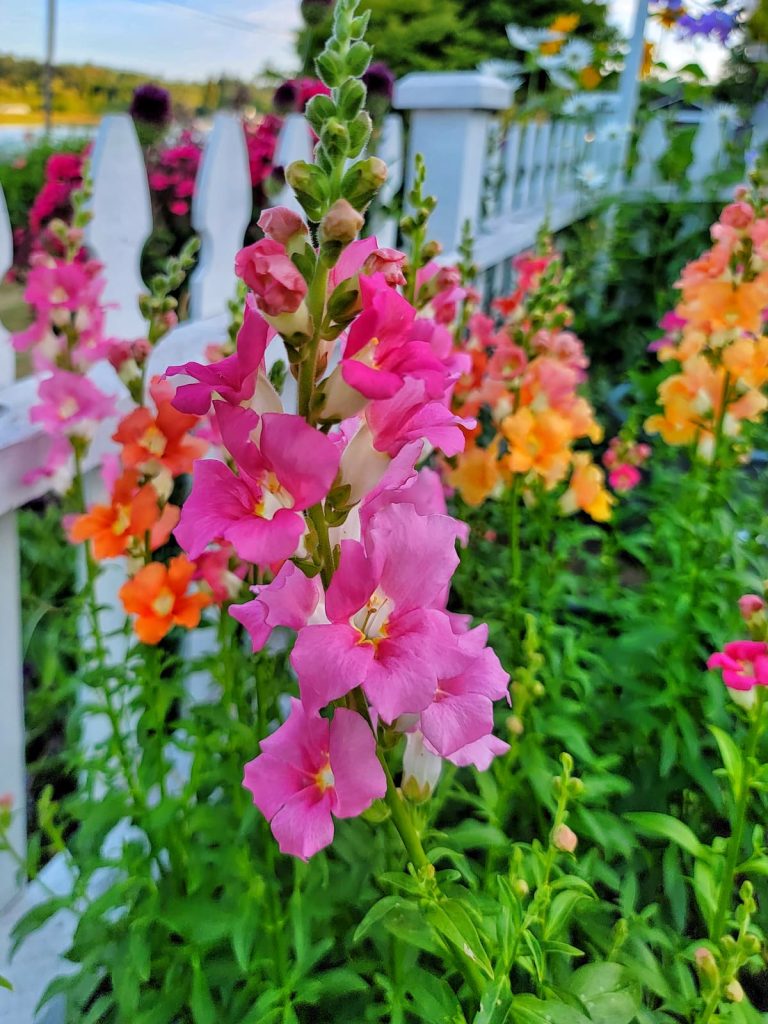
Garden Supplies and Tools
Check out my favorite garden supplies and tools for the growing season. Whether you’re looking for potting soil or deer repellent, you’ll find what I use in my own garden.
Final Thoughts for Planning a Cut Flower Garden

The cut flower garden layout planning process involves understanding your soil type, selecting the right flowers for cutting, optimally planting them to ensure good growth and blooming potential, and providing ongoing care throughout the season.
By following the proper steps and a thorough planning process when creating a cut flower garden, you are setting yourself up for a stunning outdoor space.
I hope you were able to take away a few ideas for planning your cut flower garden.
If you have any questions or additional suggestions, please share them in the comments below. And be sure to share this blog post link with anyone who may find these gardening tips helpful.
Until next time,
Happy Gardening!

I’m a self-taught gardener who shares my opinions and what has worked for me in the garden.
MORE POSTS
For You To Enjoy
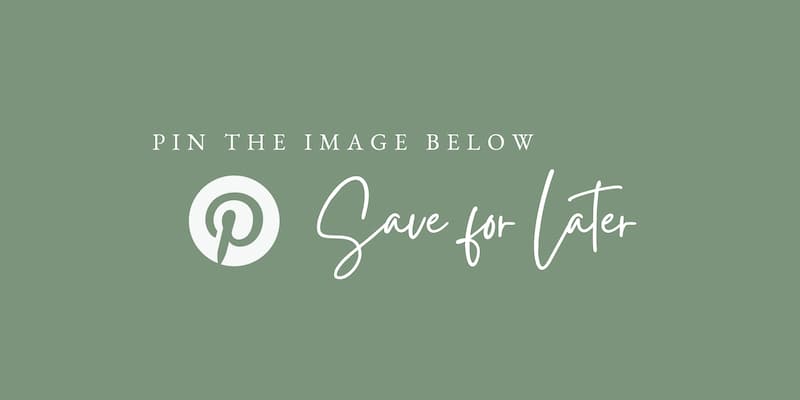
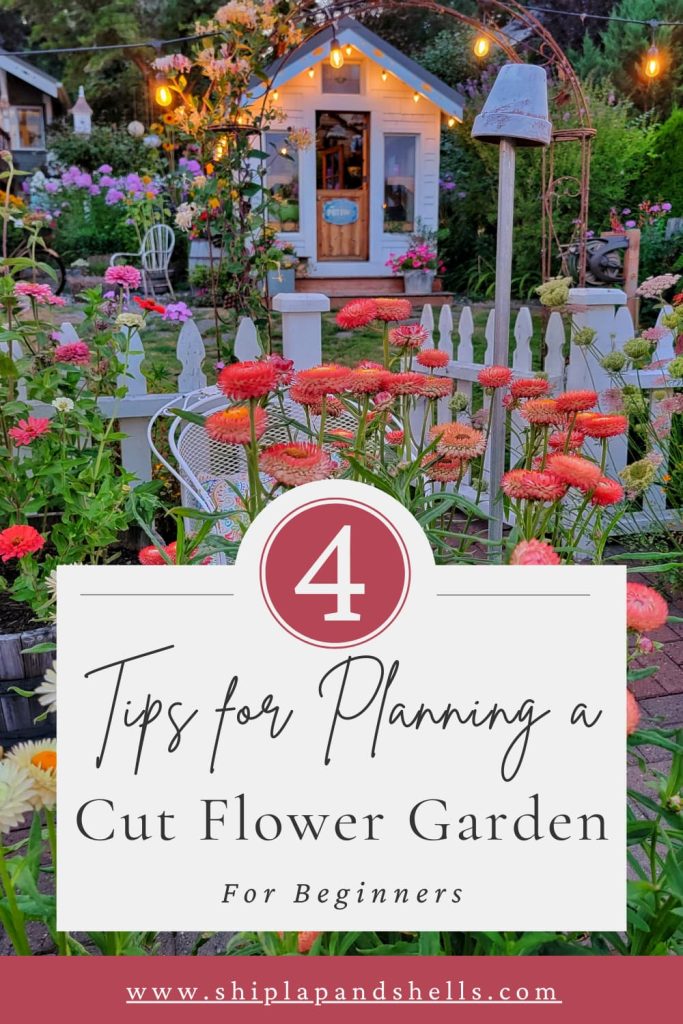
Follow Me for More Inspiration
Shop my Amazon Storefront, LTK sources, and my favorite home decor, garden, and lifestyle products. When you purchase from one of my links, I earn a small commission, which helps me continue sharing all the content you expect on my blog.
Follow me on Pinterest, Instagram, Facebook, TikTok and LIKEtoKNOW.it. Do you like gardening? Join my Facebook Gardening Tips & Tricks group.
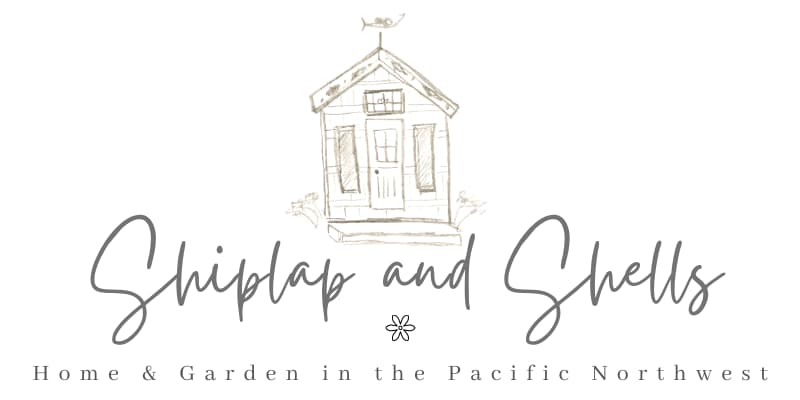
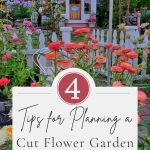
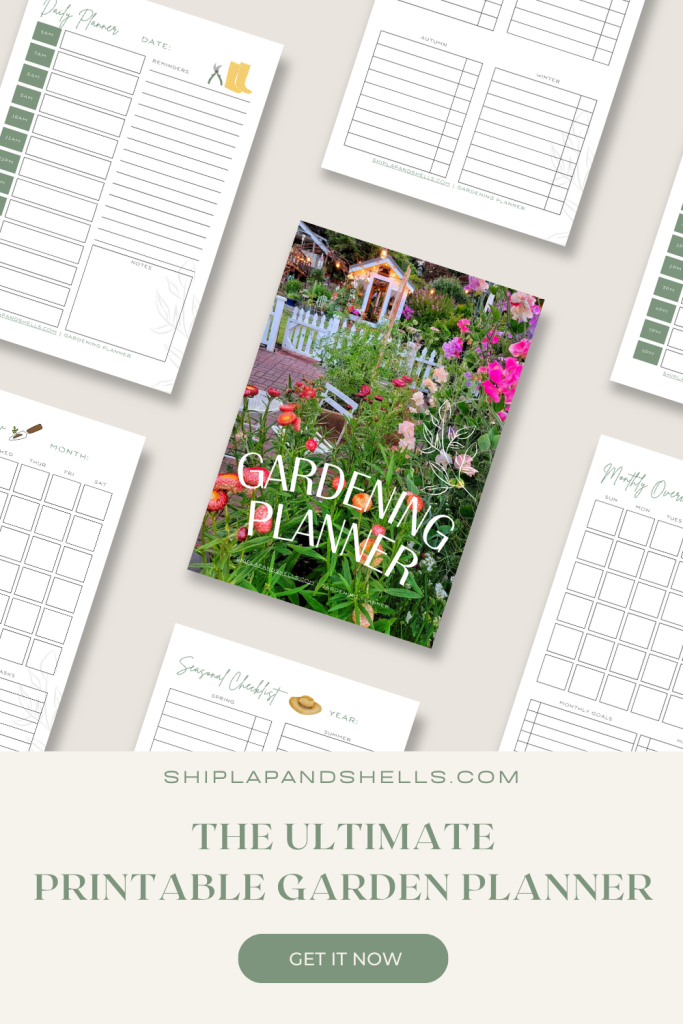

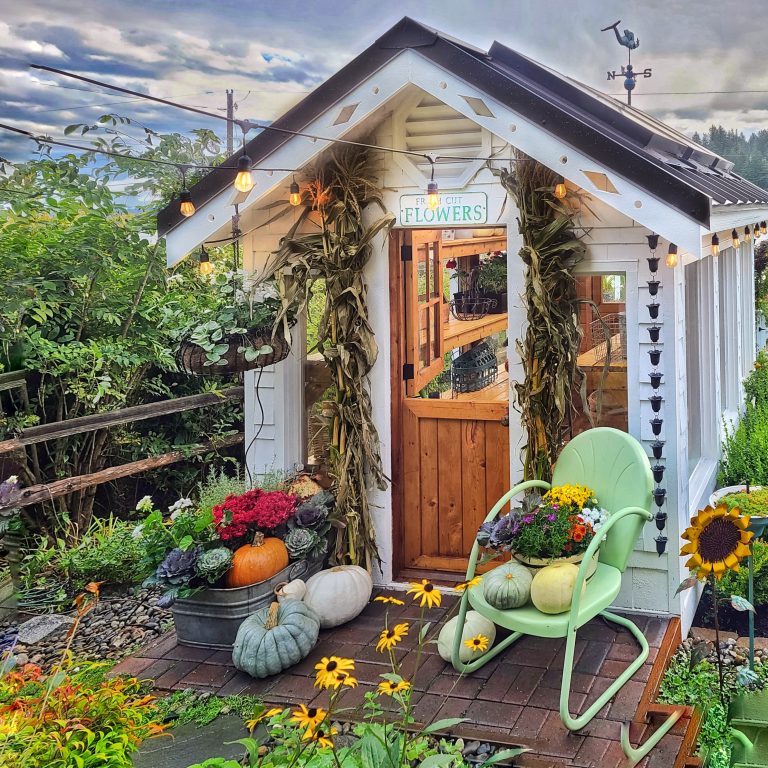
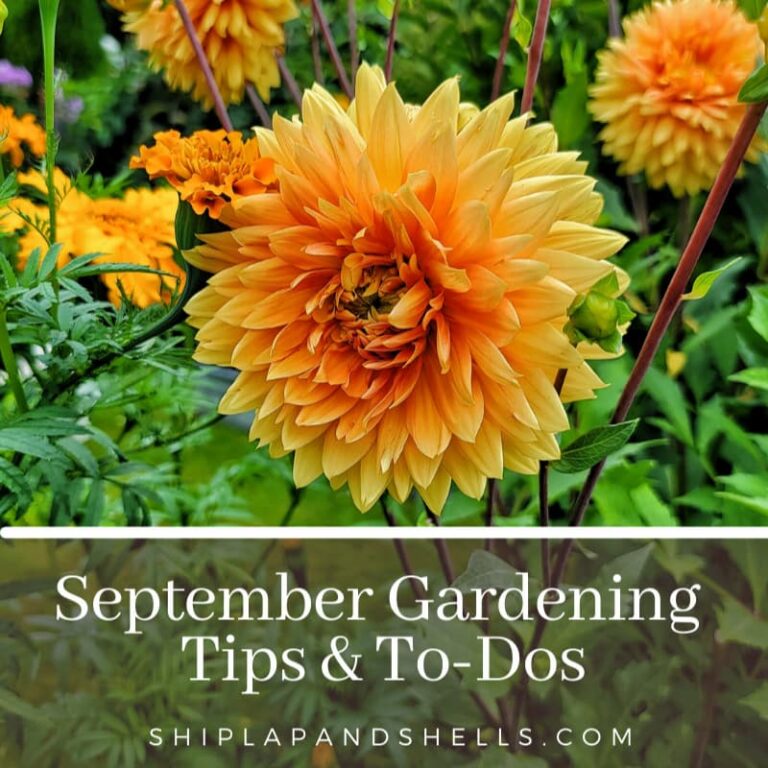


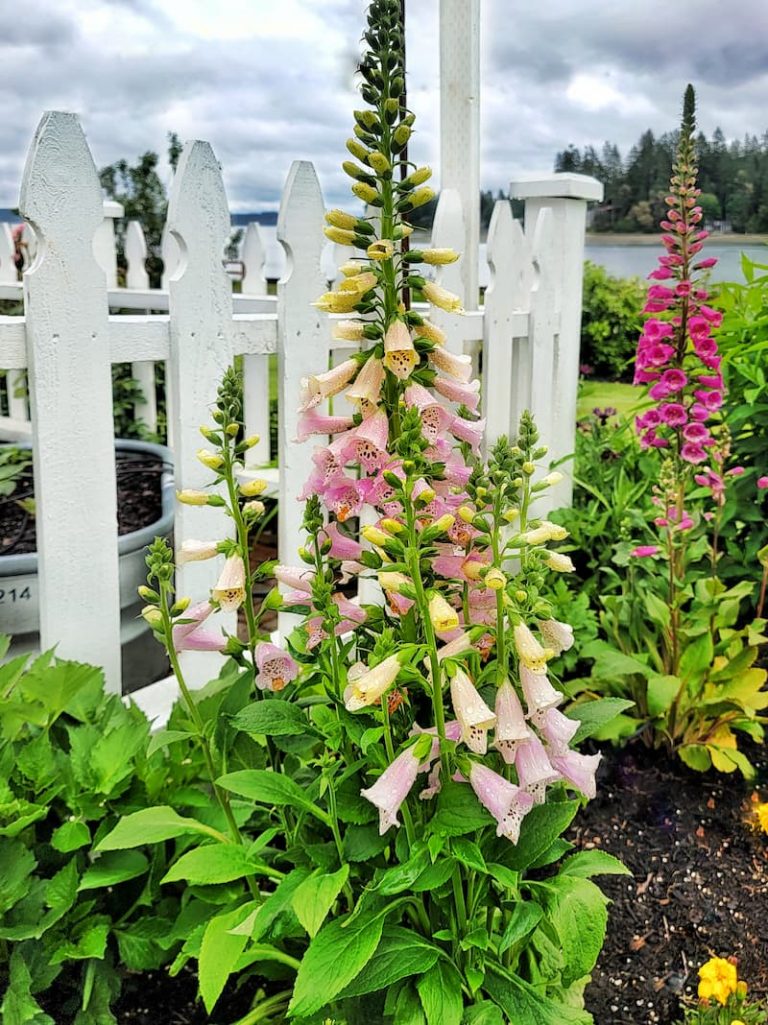
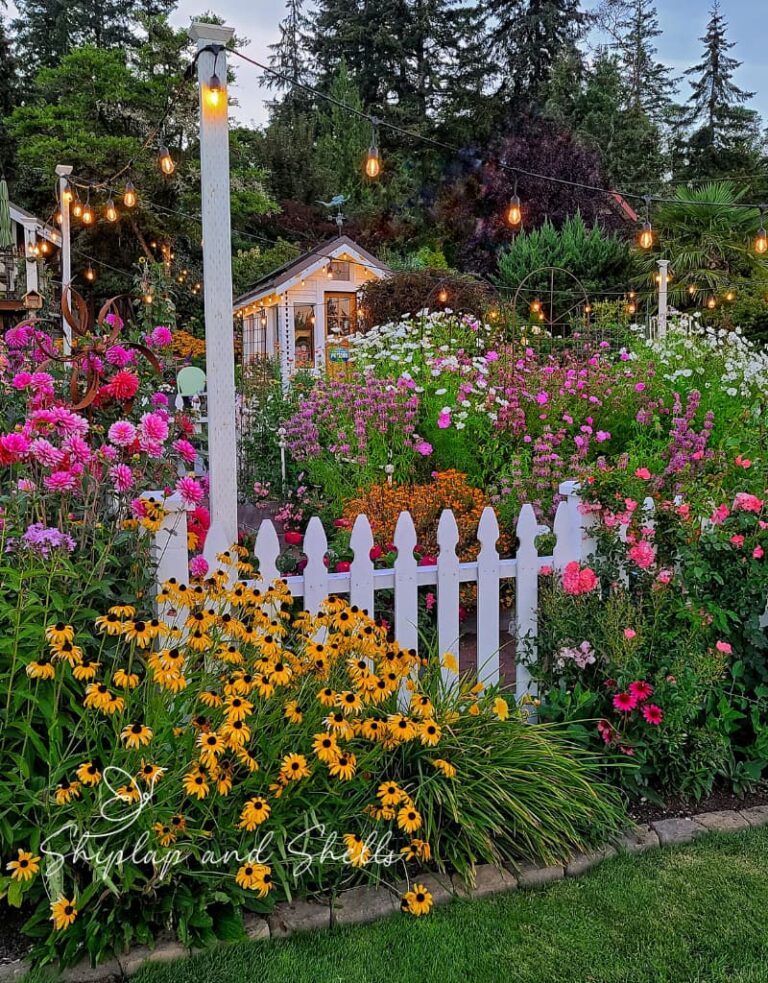
Your garden is so beautiful and inspiring! Can you tell me if you built the raised garden beds on top of the pavers or if the pavers are placed around them? I can’t tell from the pictures. I’m new to raised beds and I’m trying to figure out what’s “allowed” as the base. Thanks!
Hi Amy!
Thank you so much for the kind words.
The raised beds are basically a frame and the pavers were added a few years later. So there is no bottom. There are pros and cons to this. The pro is I have all those fabulous worms working hard from the existing soil. The con is that the moles can be a real pain with their digging.
If you have any other questions feel free to email me at kim@shiplapandshells.com
Thank you for reaching out!
Kim
Hi there. What book is this, shown open to “Starting Seeds 101”? Thanks!
Hi there,
The book is Floret Flowers Cut Flower Garden book.
Here is the link: https://urlgeni.us/amazon/cutflowergardenbook